Nvidia succeeded in delaying reviews of their 8GB RTX 5060 Ti, but they couldn't hide them forever. After about a week's delay, we can show you just how underwhelming this product really is.
In case you missed it, Nvidia launched the GeForce RTX 5060 Ti last week, available in both 8GB and 16GB configurations. Leading up to this release, we learned that Nvidia was actively holding back the 8GB model from reviews. This meant it wouldn't appear in initial coverage but would still be available for purchase when reviews went live – or shortly thereafter – which is exactly what happened.
We picked up the Asus Prime model for $720 AUD, currently the most affordable RTX 5060 Ti in stock. The most affordable 16GB model at the time was the MSI Ventus 2X for $880, a 22% premium. The issue is that both the 8GB and 16GB versions are branded simply as RTX 5060 Ti. While the GPU configuration is identical, the difference in memory capacity makes them fundamentally different products.
8GB of VRAM in 2025 for a GPU as fast as the RTX 5060 Ti – which, to be fair, isn't exactly impressive in terms of performance per dollar – is still too little memory for what this class of GPU is expected to handle. There are countless real-world scenarios where the RTX 5060 Ti will suffer severely, or even become unusable, due to the limited 8GB frame buffer. We're going to explore a few of those cases today.
The core problem with a product like the RTX 5060 Ti is that many buyers will base their expectations on the performance of the 16GB model, only to choose the cheapest version available – which will often be the 8GB model. That results in people unknowingly buying a product that is arguably already obsolete.
To be clear, 8GB of VRAM is still enough for the majority of games today, and in many cases where it's not, lowering the visual settings can still provide a playable experience.
However, it's no longer sufficient for an optimal experience in many of the latest titles – and this situation is only going to deteriorate over the next few years. Most people buying a GeForce 50-series graphics card right now, especially something like the RTX 5060 Ti, are likely planning to use it for at least the next three years, if not longer. We don't even want to imagine how poorly 8GB cards will perform by then. It'll likely mirror what we're currently seeing with 4GB GPUs.
And let's be honest: when spending over $400, do you really want to be constantly worrying about VRAM? Tweaking settings just to squeeze under the memory cap shouldn't be necessary at this price point. That's a compromised and frustrating experience. The 8GB model is supposed to have an MSRP of $380, but the lowest listing we've found on Newegg is $420, with most models priced at $440 or higher.
Meanwhile, 16GB models start at $430, though many go for $480 or more. Even in the worst-case scenario, you're looking at only a 14% premium for double the memory. That makes the 8GB model a serious trap for buyers unaware that two distinct versions of the same product exist.
The point is, there should never have been an 8GB version of the RTX 5060 Ti, and Nvidia knows it. They know this is a weak product. They know that 8GB of VRAM in 2025 is far from adequate. And they also know that many of you know this. But they also know they can make a lot of money from it, because many gamers aren't tech-savvy and will just buy the cheapest option. They're also counting on the pre-built PC market.
By selling people a product that's already outdated, Nvidia ensures they'll return sooner than they otherwise would – whether for the next generation or even a mid-cycle refresh. We've been saying it for years: this is planned obsolescence. And if you can't see it now, well you're Nvidia's favorite type of customer.
Test Notes and System Specs
This review takes a different approach from our usual lineup of blue bar graphs, performance summaries, and cost-per-frame evaluations. To highlight just how poorly the 8GB RTX 5060 Ti performs in 2025, we purchased one and spent several days running extensive side-by-side tests.
In the graphs, you'll find data such as average frame rate, 1% low FPS, VRAM usage, and frametime graphs that highlight stuttering and frame pacing issues. These issues are easier to showcase in the video version of this review if you want to check that out.
For all of this testing, we're using a PCIe 5.0-enabled AM5 system with the 9800X3D and 32GB of DDR5-6000 CL30 memory. This setup is essentially a best-case scenario for running over the VRAM buffer with an RTX 5060 Ti. Performance will be worse on PCIe 4.0 systems, and drastically worse on PCIe 3.0.
Gaming Benchmarks
The Last of Us Part II
4K DLSS Quality, Very High Preset
We'll start with The Last of Us Part II, running at 4K. Now, you might think 4K is a questionable choice for a product like this, but we'd argue otherwise for a few reasons. Firstly, the RTX 5060 Ti is capable of 4K gaming – especially with upscaling like DLSS set to quality mode. Secondly, high-quality 4K high refresh rate monitors now cost less than the RTX 5060 Ti itself and can deliver a truly stunning visual experience.
The key takeaway here is that the 16GB card averaged 68 fps, while the 8GB model barely surpassed 30 fps, with frequent frametime spikes. By the end of our test, the 16GB version delivered 120% better 1% low performance – a massive difference. We know some will dismiss 4K results, so let's move to 1440p.
1440p DLSS Quality, Very High Preset
Performance does improve for the 8GB model at 1440p, but it still suffers from severe frametime issues. Meanwhile, the 16GB card delivers frame rates around 30% higher. We're using the Asus Prime model for both versions, and while the 16GB card clocks about 1% higher, that minor difference doesn't explain the performance gap. By the end of testing, the 16GB version was 34% faster on average and delivered 215% better 1% lows.
1440p DLSS Quality, Very High Preset + Frame Generation
Frame generation has been a major selling point for both the GeForce 40 and 50 series. But when enabled, the additional VRAM requirements severely affect the 8GB model, dropping 1% lows into the single digits – making for a truly poor experience.
1440p DLSS Quality, High Preset
What if we drop down to the High preset? At 1440p with DLSS enabled, we encounter occasional stutters on the 8GB card, but overall performance is acceptable. Still, the 16GB card maintains a clear lead – 18% faster on average, with 35% better 1% lows.
1440p DLSS Quality, Medium Preset
Switching to the Medium preset cleans up frame pacing for the 8GB model, making the experience smoother. Even then, the 16GB model still delivers 12% higher average performance and 11% better 1% lows.
1440p DLSS Quality, Low Preset
Even with the Low preset, the 16GB version remains 8% faster on average. It's not a huge difference, but still surprising to see any gain considering we're nearing the absolute limit of the 8GB card's capability.
1080p Native, Very High Preset
At native 1080p using the Very High preset, the game demands over 9GB of VRAM. This causes the 8GB model to struggle significantly, with terrible frametime performance – even at this lower resolution. As a result, the 16GB card delivered 25% better average frame rates and an astounding 320% improvement in 1% lows. Let's move on to another title.
Final Fantasy XVI
1080p Native, Ultra Preset
Here we're testing Final Fantasy XVI at native 1080p using the Ultra preset. While the 8GB model offers a playable experience, the 16GB version still comes in 14% faster. That said, 1080p is quite low by 2025 standards – so let's jump up to 1440p.
1440p Native, Ultra Preset
At native 1440p, the 16GB card pulls ahead by a significant margin – 58% higher average frame rate and 218% better 1% lows. While we personally wouldn't play this game at around 50 fps, we know some prioritize visual fidelity over frame rates.
1440p DLSS Quality, Ultra Preset
Using DLSS for upscaling delivers what we'd consider a more optimal setup. The 16GB card averaged 74 fps, making it 80% faster than the 8GB model, which only managed 41 fps.
1440p DLSS Quality + Frame Generation, Ultra Preset
Out of curiosity, we enabled frame generation. It helped the 8GB model somewhat, but the 16GB card was still 24% faster on average, with 30% better 1% lows. Despite the seemingly decent frame rates, the experience on the 8GB model felt noticeably worse.
1440p Native, High Preset
Finally, running the game at native 1440p with the High preset allowed the 8GB card to roughly match the 16GB version, trailing by just a few percent.
Indiana Jones and the Great Circle
1080p Native, Medium Preset
Getting the 8GB RTX 5060 Ti to run Indiana Jones and the Great Circle wasn't easy. Only the Low and Medium presets worked, and even then, we couldn't test 4K with DLSS enabled using the Medium preset, as the game would immediately crash to desktop. At native 1080p using just the Medium preset, the 8GB card averaged 114 fps, while the 16GB version was 7% faster. Overall, the 8GB card handled this scenario fairly well.
1440p Native, Medium Preset
However, moving to 1440p, the 8GB card begins to struggle. While it maintains decent frame time consistency, the 1% lows were 90% higher on the 16GB model, and average frame rates improved by 82%. Under these conditions, the 16GB card delivered a far superior experience.
1080p Native, Ultra Preset
The 16GB version also performed well at 1080p using the Ultra preset – and even at 1440p with upscaling. In contrast, the 8GB model crashed to desktop whenever we attempted anything above the Medium preset. In this case, the difference was night and day.
Hogwarts Legacy
1440p Native, Ultra Preset
When playing Hogwarts Legacy at native 1440p with the Ultra preset, both GPUs performed similarly in terms of average frame rate. However, the 8GB card suffered from texture pop-in issues – something we've previously seen with the 8GB RTX 4060 Ti.
1440p Native, High Preset, Ray Tracing High
Performance issues for the 8GB card became much more severe once ray tracing was enabled. Using the High preset with High ray tracing at 1440p, the 16GB model delivered 62% higher average frame rates and a massive 483% improvement to 1% lows. The 8GB version, by comparison, was an unplayable stuttering mess.
1440p Native, Medium Preset, Ray Tracing Medium
We then tried the Medium preset with Medium ray tracing, and the 8GB model still exhibited frequent frame time spikes and poor 1% lows. The 16GB card was up to 96% faster in this scenario.
Horizon Forbidden West
4K DLSS Performance, Very High Preset
Next up is Horizon Forbidden West at 4K using DLSS in Performance mode with the Very High preset. These settings were completely unplayable on the 8GB card, which delivered 1% lows of just 9 fps. In contrast, the 16GB card averaged 72 fps and maintained 1% lows above 60 fps, making it 350% faster on average and 589% faster in 1% lows.
1440p DLSS Quality, Very High Preset
Dropping to 1440p with DLSS set to Quality helped the 8GB card somewhat, but the game was still not playable, with 1% lows of only 18 fps. The 16GB model, meanwhile, was even faster than it was at 4K, averaging nearly 100 fps – 234% faster overall, or 344% faster based on 1% lows.
1080p Native, Very High Preset
At 1080p native resolution with the Very High preset, the 8GB model was finally playable, although frame pacing issues remained. The 16GB card, on the other hand, delivered a flawless experience, averaging 100 fps with 1% lows above 80 fps – making it nearly 80% faster on average, with 131% better 1% lows.
1440p DLSS Quality, High Preset
At 1440p with DLSS set to Quality and using the High preset (not even the highest), the 16GB card still pulled significantly ahead. A quick note: we mistakenly scaled the overlay stats in RivaTuner during testing, as we had to revisit the 16GB model to ensure both GPUs were tested under the same lighting and time-of-day conditions. Despite this minor discrepancy, both cards were tested under identical settings.
Under these conditions, the 16GB version was 148% faster in average frame rate and 193% faster in 1% lows. The 8GB model also struggled with frame pacing, resulting in a noticeably jittery experience.
1440p DLSS Quality, Medium Preset
Finally, at 1440p with DLSS Quality and the Medium preset, we found a configuration where the 8GB model was usable – not great, but functional. However, frame time issues persisted, and the 16GB card still delivered 47% higher 1% lows.
Space Marine 2
4K DLSS Q, Ultra Preset, 4K Textures
Space Marine 2 offers an interesting look at the 8GB vs. 16GB comparison, and a key reminder of why benchmark graphs alone don't always tell the full story. Using the Ultra preset with the 4K texture pack enabled at 4K with DLSS set to Quality, both GPUs delivered frame rates comfortably above 60 fps. Oddly enough, the 8GB card appeared slightly faster – until you realize it's not fully rendering the game.
Looking at static image comparisons, it's immediately obvious how poor the 8GB presentation is compared to the 16GB model. The differences are striking. The low-resolution, muddy textures on the 8GB card are worsened by frequent pop-in as the game attempts to load higher-resolution assets – resulting in a flickery mess.
Under these settings, very few textures render correctly with the 8GB card, while the 16GB model delivers both excellent visuals and performance. We've seen this issue before – games like Halo Infinite and Forspoken come to mind – where performance may look fine on paper, but the actual presentation is severely degraded due to limited VRAM.
A Plague Tale: Requiem
4K DLSS Quality, Ultra Preset
Next, in A Plague Tale: Requiem, we tested at 4K using DLSS Quality with the Ultra preset. While the 16GB model didn't break performance records, it still averaged 52 fps – 33% faster than the 8GB card – and delivered 51% better 1% lows.
4K DLSS Performance, Ultra Preset
Using DLSS Performance mode at 4K yields more realistic results for this title. Here, both cards averaged over 60 fps, but the 16GB model still managed 23% better 1% lows.
4K DLSS Performance, High Preset + Ray Tracing On
For over 80 fps, we enabled ray tracing at 4K with DLSS Performance and the High preset. The 16GB card averaged 86 fps with 1% lows of 72 fps. The 8GB card, however, was unable to maintain playable performance and actually crashed during this test.
Assassin's Creed Shadows
1440p DLSS Balanced, Very High Preset
Testing Assassin's Creed Shadows at 1440p with DLSS set to Balanced and the Very High preset, the 8GB card struggled with poor frame pacing. The 16GB card was 52% faster in 1% lows and 50% faster on average. Most importantly, the game was enjoyable at 66 fps – but not at 44 fps with erratic frame times on the 8GB model.
1440p DLSS Balanced + Frame Generation, Very High Preset
Enabling frame generation didn't fix the stuttering issues on the 8GB model. In this configuration, the 16GB version was 62% faster in average frame rate.
Cyberpunk 2077
1440p DLSS Quality, Ray Tracing: Medium
At 1440p with DLSS Quality and ray tracing set to Medium, the 8GB card struggled badly. While the 16GB model averaged 54 fps – a 26% uplift – the real difference was in 1% lows, which were 73% higher, making gameplay on the 8GB card noticeably worse.
4K DLSS Performance, Ray Tracing: Low
If you're hoping to enjoy ray tracing at 4K with DLSS Performance and the Low RT preset, the 8GB card falls apart – delivering just 29 fps on average with 1% lows of 16 fps. The 16GB card was up to 206% faster.
Marvel Rivals
4K DLSS Performance, Ultra Preset
In Marvel Rivals at 4K with DLSS Performance and the Ultra preset, the 16GB model averaged 69 fps with 1% lows of 53 fps. While not ideal for a competitive shooter, it's at least playable. Compared to the 8GB version, the 16GB card delivered 30% better average frame rates and an 89% improvement in 1% lows.
Spider-Man 2
4K DLSS Performance, Very High Preset
At 4K with DLSS Performance and the Very High preset, the game was unplayable on the 8GB card, with terrible frame pacing and an average frame rate below 20 fps. In contrast, the 16GB version averaged just over 60 fps, with a 533% improvement in 1% lows.
1440p DLSS Quality, Very High Preset
Dropping to 1440p with DLSS Quality, the 8GB model remained broken and unusable, while the 16GB card averaged over 80 fps with 1% lows of 47 fps – resulting in smooth and enjoyable gameplay.
1440p DLSS Quality, High Preset
Switching to the High preset at 1440p, the 8GB card was still inadequate. The 16GB version averaged over 90 fps, offering a 221% increase in average frame rate and a 358% boost in 1% lows.
1080p Native, Very High Preset
We then dropped to native 1080p, where upscaling isn't ideal, using the Very High preset. Even here, the 8GB card averaged just 49 fps. The 16GB card was nearly 60% faster, averaging 78 fps.
1080p Native, High Preset
Finally, using the High preset at 1080p, the 8GB model still performed poorly with erratic frame times and subpar overall performance. The 16GB version was 35% faster in average frame rate and 58% faster in 1% lows. Simply put, 8GB of VRAM is a terrible choice for Spider-Man 2.
Star Wars Jedi: Survivor
4K DLSS P, Epic Preset
Moving on to Star Wars Jedi: Survivor, we didn't even enable ray tracing here. At 4K using DLSS Performance with the Epic preset, the 16GB model averaged 68 fps, while the 8GB version was limited to just 32 fps. That's a 113% performance advantage in favor of the 16GB card and a 104% improvement in 1% lows. Additionally, the 8GB card rendered the game incorrectly, with missing textures and visual artifacts.
Alan Wake 2
1440p DLSS Q, High Preset
A game where the 8GB model performed well was Alan Wake 2. Here, we observed very similar performance between both versions of the RTX 5060 Ti. As we mentioned at the start of this review, this is what you'll see in the majority of games.
God of War Ragnarök
4K DLSS P, Ultra Preset
God of War Ragnarök is another example where 8GB of VRAM was mostly adequate. There was a small performance hit, but at 4K with DLSS set to Performance and the Ultra preset enabled, the 8GB card managed fine – at least in our test area. It's possible other sections of the game could expose limitations.
Black Myth: Wukong
1440p DLSS Q, Very High Preset
Black Myth: Wukong also ran reasonably well on the 8GB model, though the 16GB card did deliver slightly better performance. This could change in more demanding areas or during longer gameplay sessions. The important point is that even in games where performance seems fine, we're operating right on the edge of the 8GB VRAM buffer.
What We Learned
We just looked at 15 games, each with numerous examples where the 8GB version of the RTX 5060 Ti is clearly held back by its memory buffer. In each case, the 16GB model delivered a consistently superior experience under the same conditions.
It's painfully obvious that an 8GB frame buffer is no longer satisfactory for PC gaming beyond the most entry-level products, which can't cost more than about $150. Since such products no longer exist in the current market, neither should 8GB VRAM configurations. Realistically, 12GB should be the new minimum. But if you're aiming for an uncompromised experience, especially over the typical lifespan of a GPU, then 16GB is what you need – and we're confident that this will become increasingly obvious in the coming years.
With that in mind, don't let anyone convince you that the RTX 5060 Ti isn't suitable for 4K gaming. As we've shown, with enough VRAM, it absolutely is. And 1440p gaming with upscaling is exactly what a $400 GPU should be capable of – and it is, provided it comes with 16GB of VRAM.
We've seen people argue that the RTX 5060 Ti is meant for 1080p gaming, but that's simply not true. That line of reasoning does a disservice to consumers. As clearly demonstrated here, the RTX 5060 Ti is very capable at both 1440p and 4K with upscaling – provided it has 16GB of VRAM.
Our take is straightforward: if you're buying a new graphics card in 2025 and spending around $300, it should come with at least 12GB of VRAM. If you're spending $400 or more, it needs to have 16GB. And anything beyond that – like a future RTX 5080 – should offer at least 24GB, especially with next-gen consoles expected to launch within the lifespan of these GPUs.
Unfortunately, we suspect this will turn into another RTX 3080 10GB situation – except at a much higher price. And once again, this benefits Nvidia, as their planned obsolescence strategy will push RTX 5080 owners to upgrade sooner than necessary.
As for the GeForce RTX 5060 Ti, our biggest issue is that the 8GB and 16GB versions share the same name. Realistically, there should only be one configuration. The performance gap between them is too substantial to ignore. Ideally, the RTX 5060 Ti should come with 16GB, and a non-Ti version could offer 12GB – or better yet, 16GB as well. There's no justification for an 8GB model in this product tier.
Another factor worth considering is resale value. Based on sold listings on eBay, the 16GB version of the RTX 4060 Ti is fetching 42% more than the 8GB version, despite only costing up to 25% more at launch. Expect that disparity to grow even wider for the RTX 5060 Ti. Two years from now, the 8GB versions will likely be nearly worthless in comparison.
To wrap things up: the 8GB version of the RTX 5060 Ti is possibly the worst trap we've ever seen laid for mainstream gamers. Nvidia has really outdone themselves here. Their efforts to suppress early reviews and exploit uninformed buyers are unacceptable. And they're planning to do the same with the RTX 5060 – but rest assured, we'll be there to cover that as well.
This is yet another reason why the GeForce 50 series may go down as Nvidia's worst generation ever. And the most frustrating part? It didn't have to be this way. For now, we're done with the 8GB RTX 5060 Ti. But on the bright side, Nvidia has inadvertently provided us with the perfect case study for examining VRAM limitations moving forward.






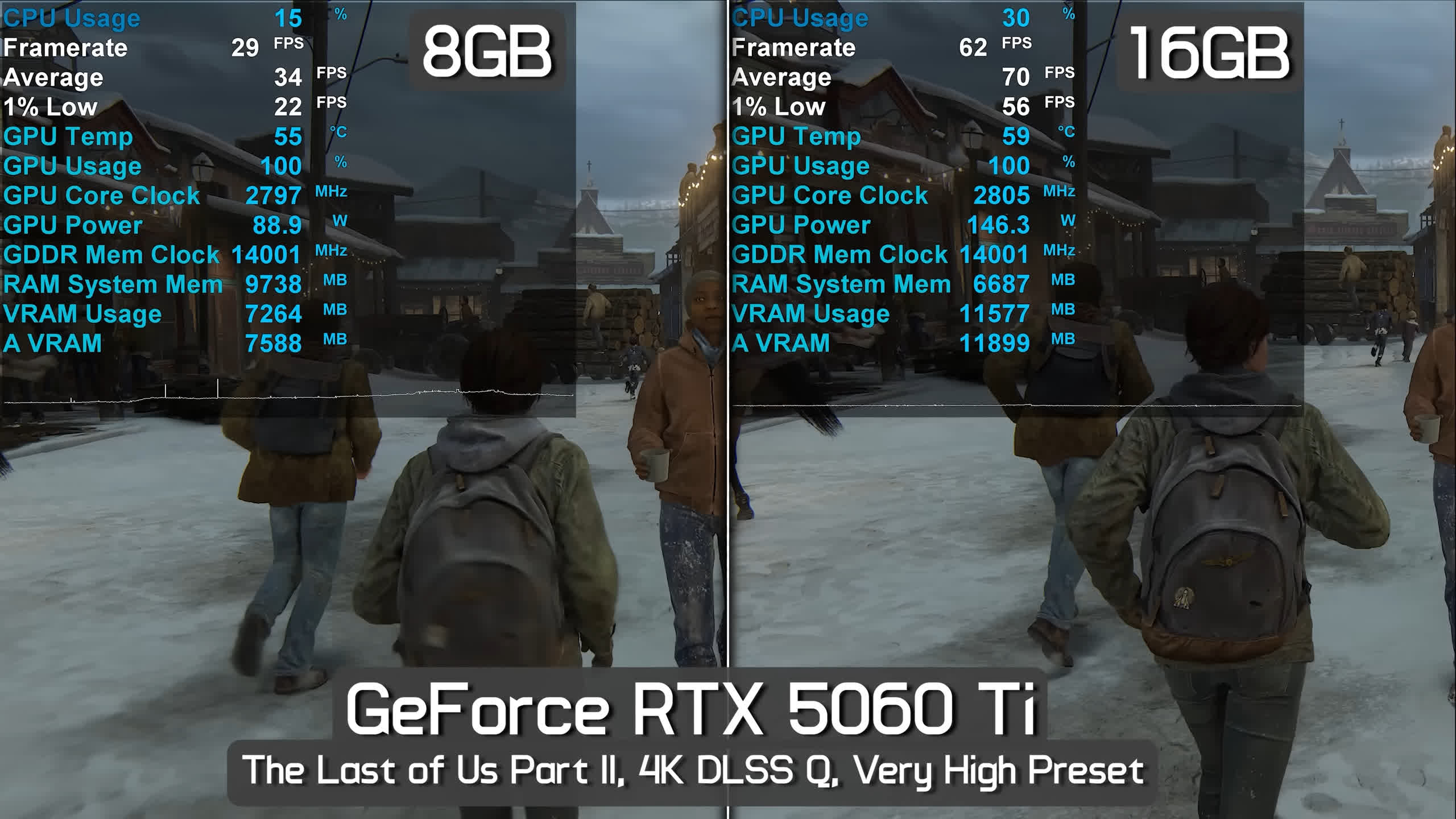
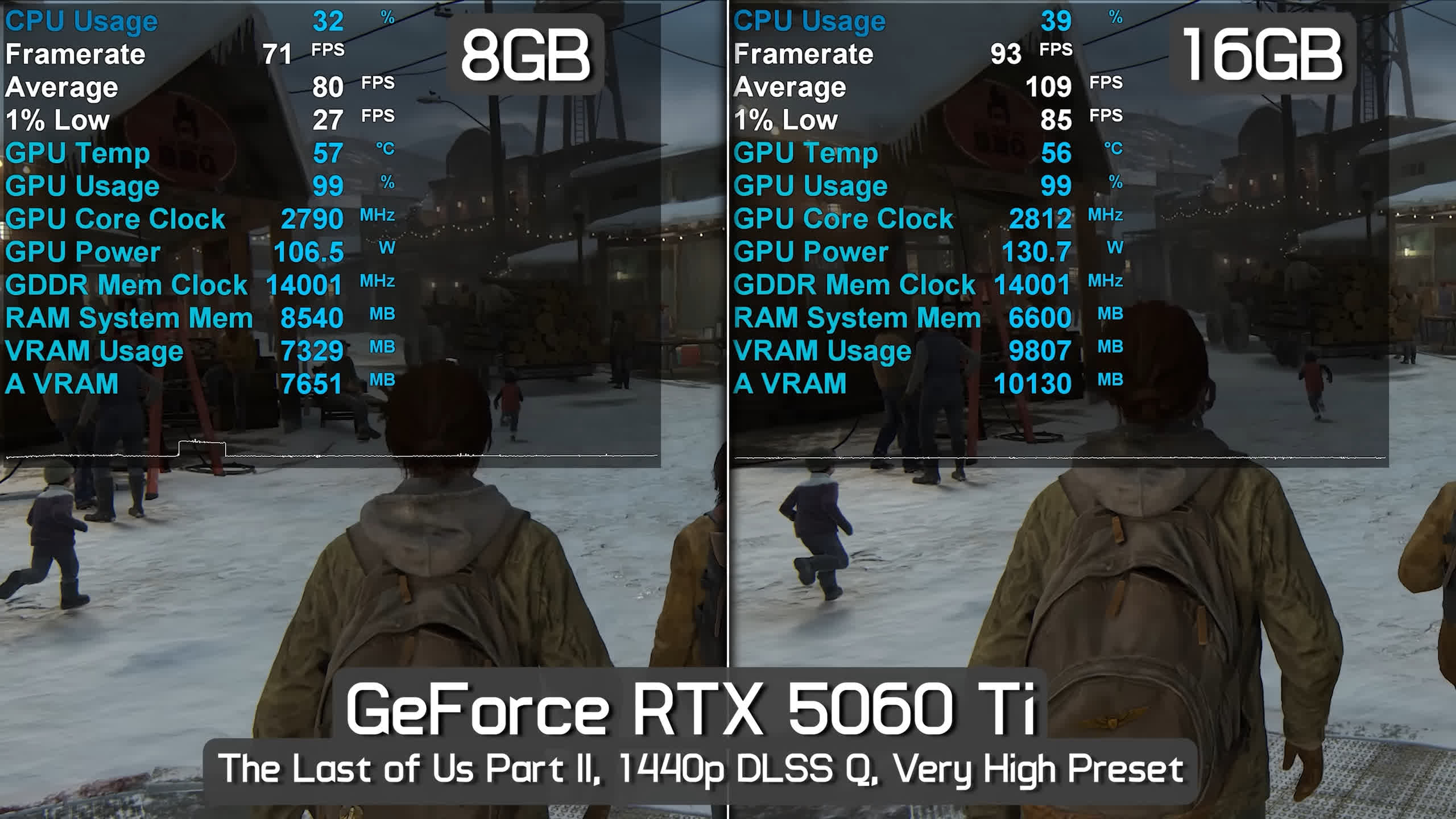
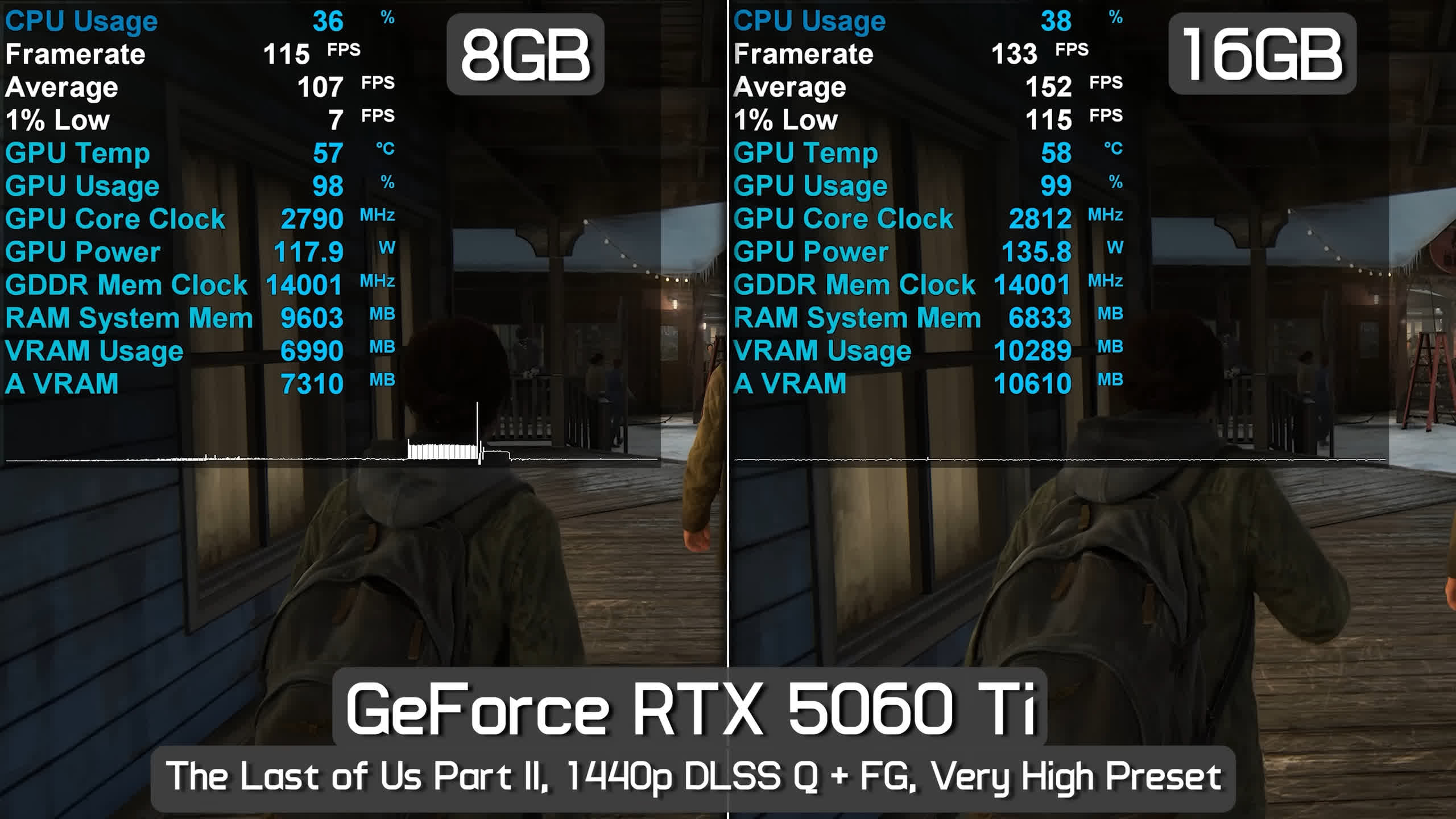
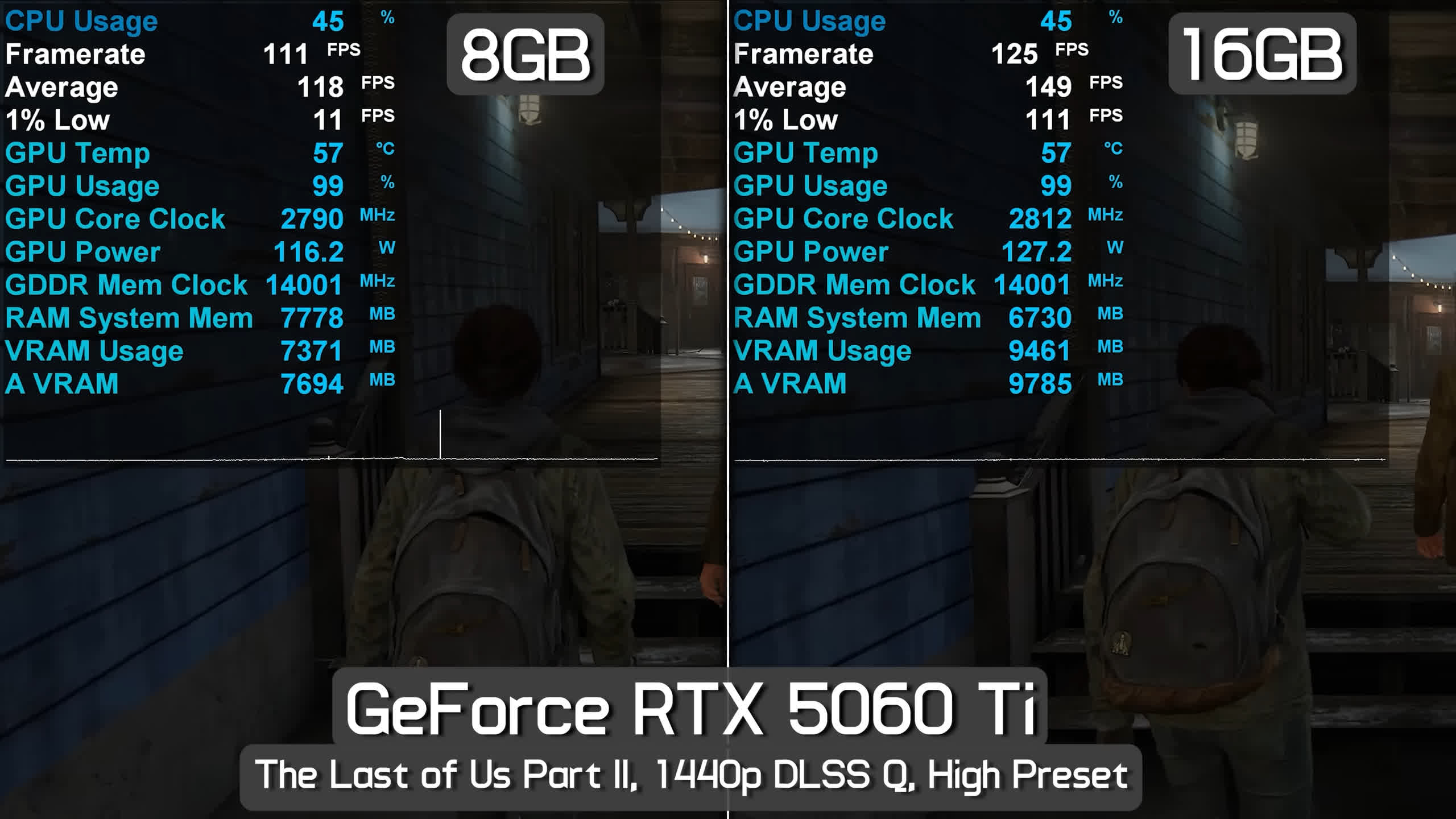

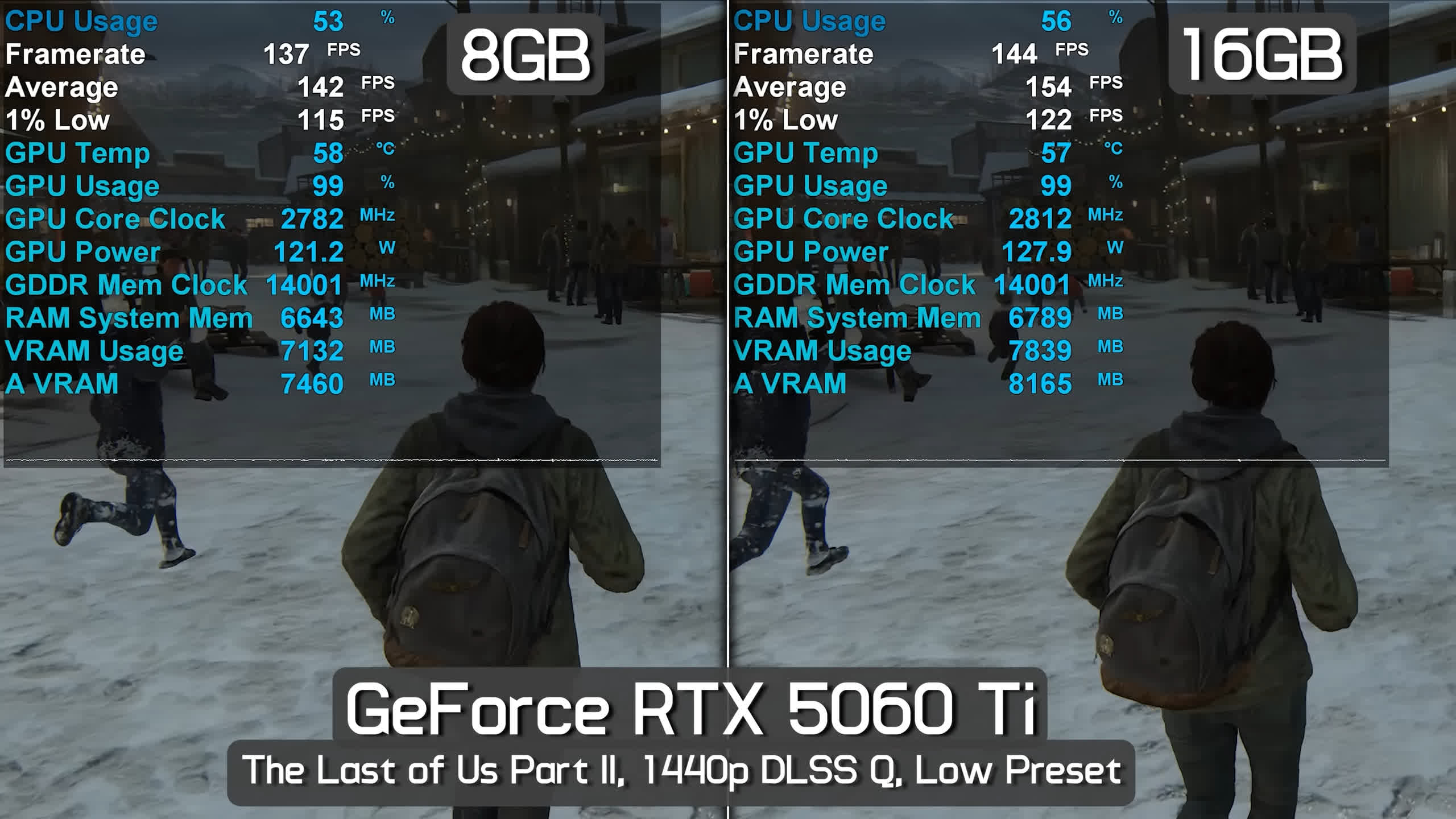

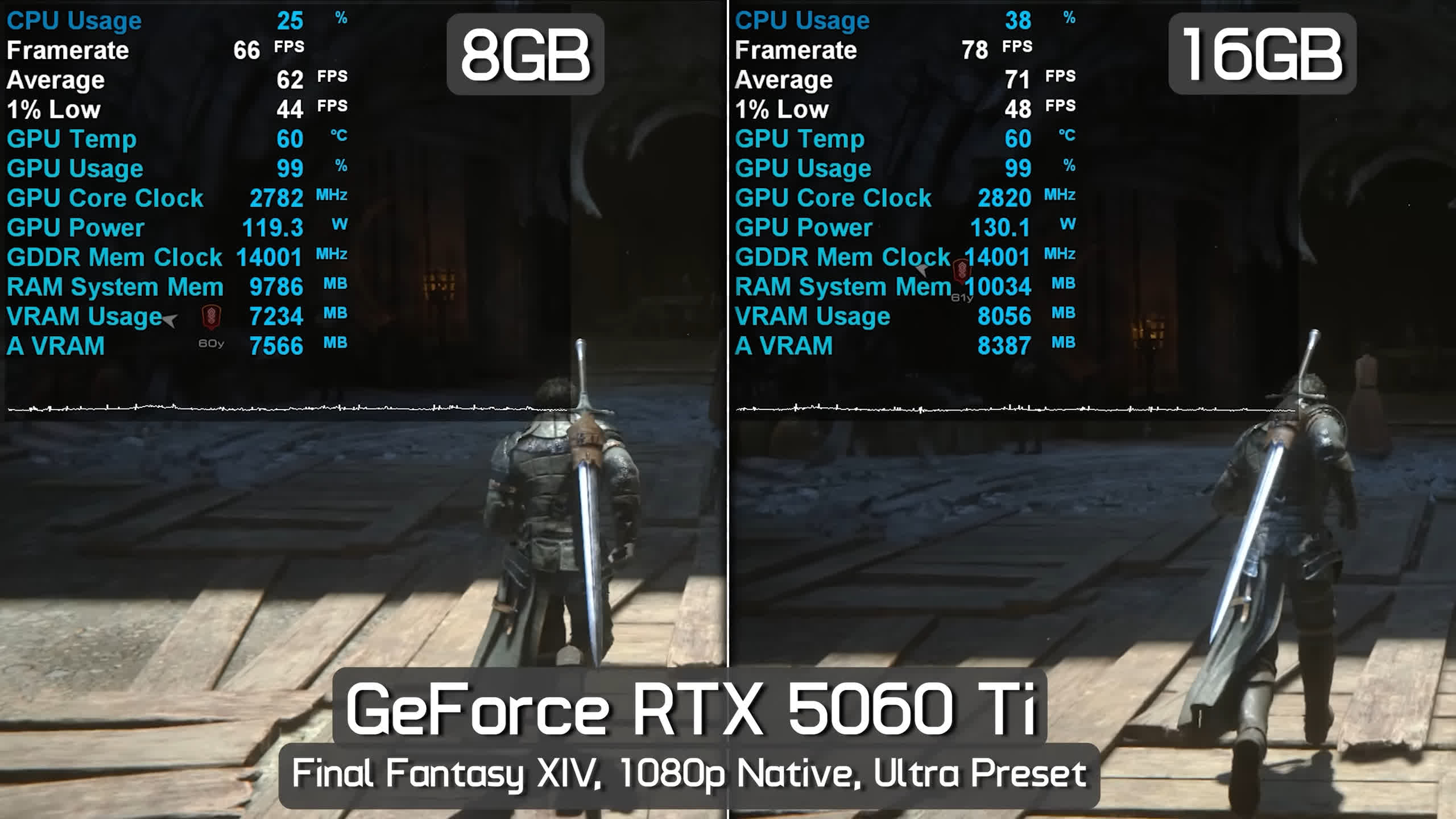
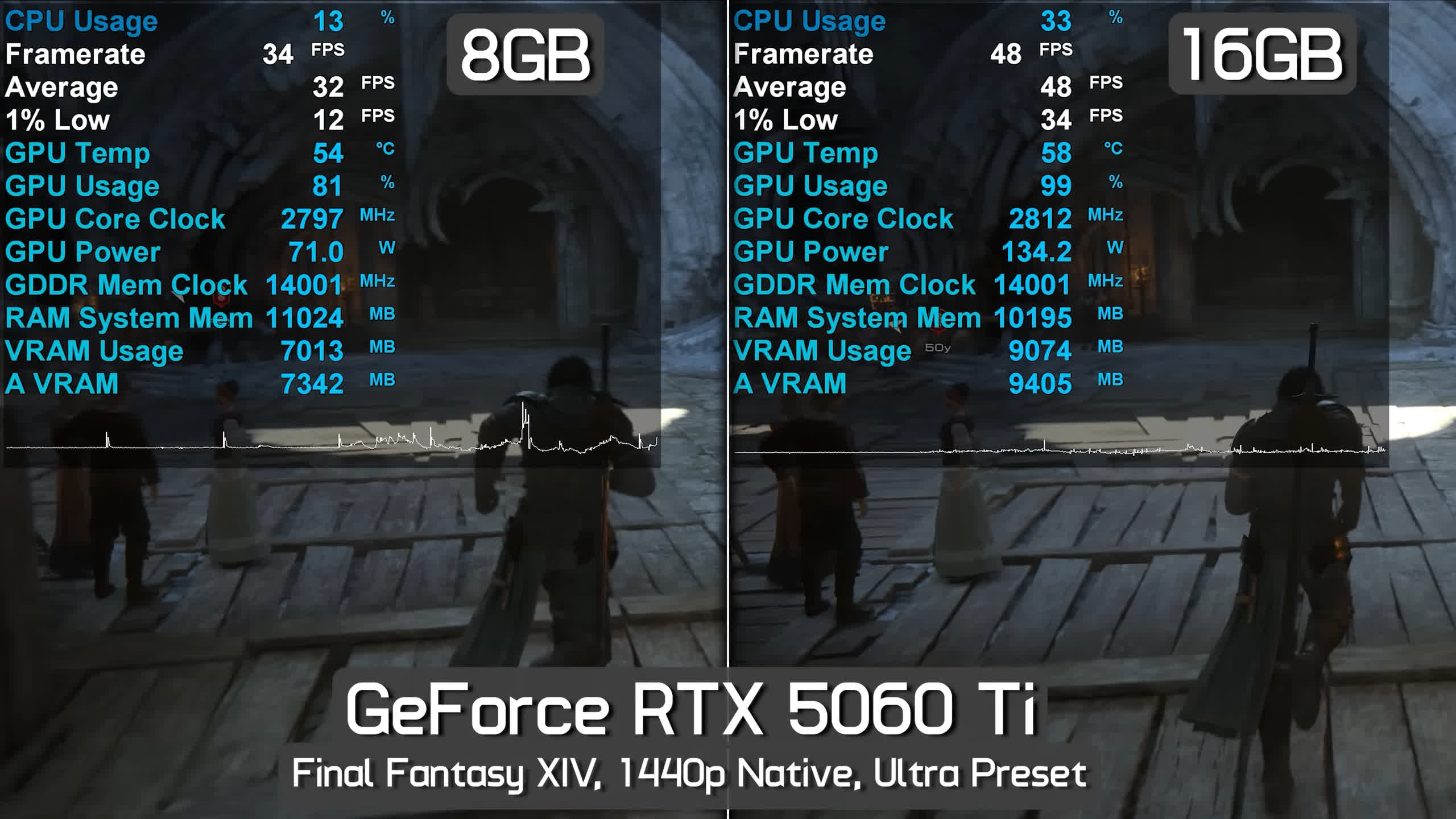
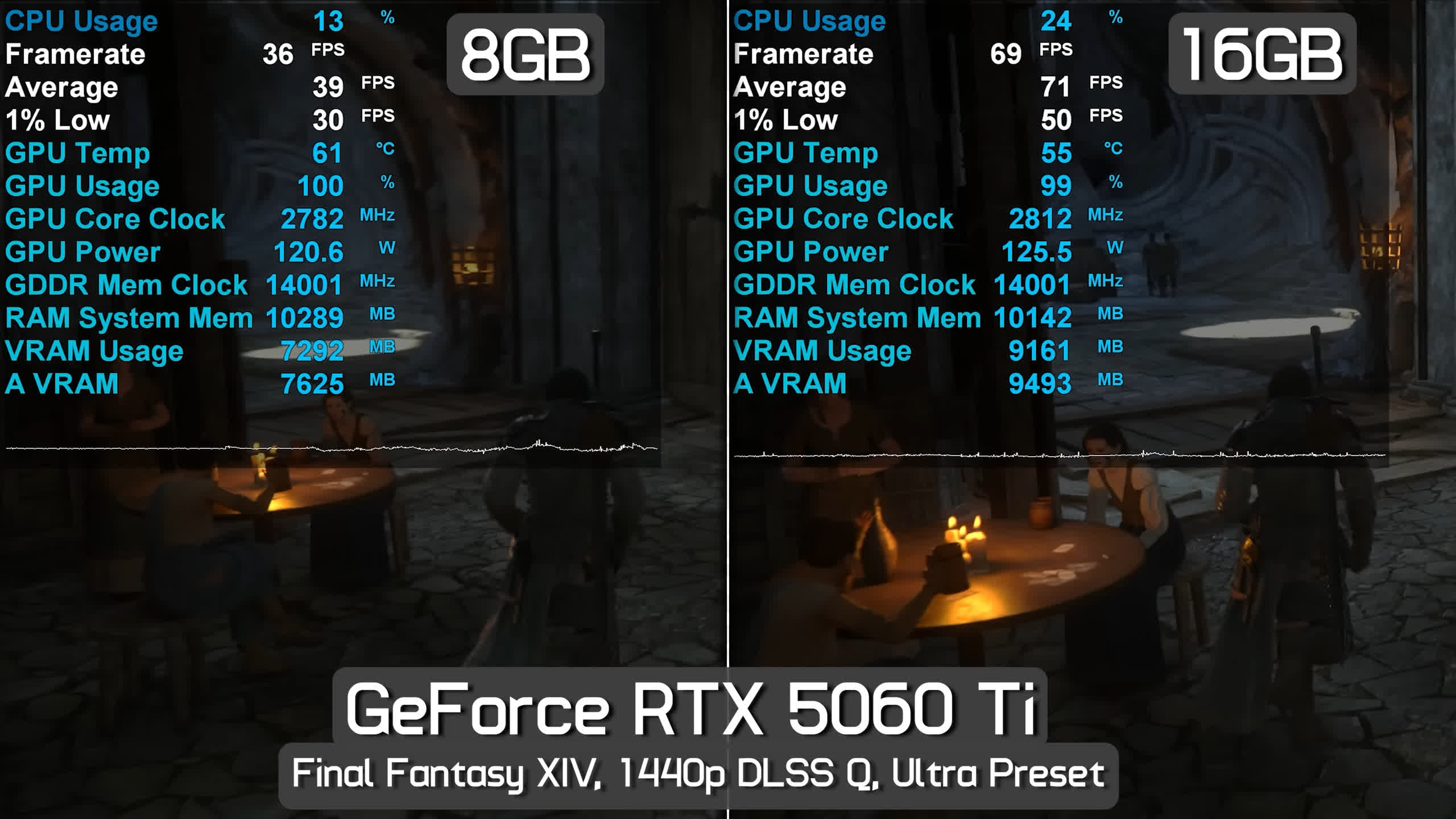
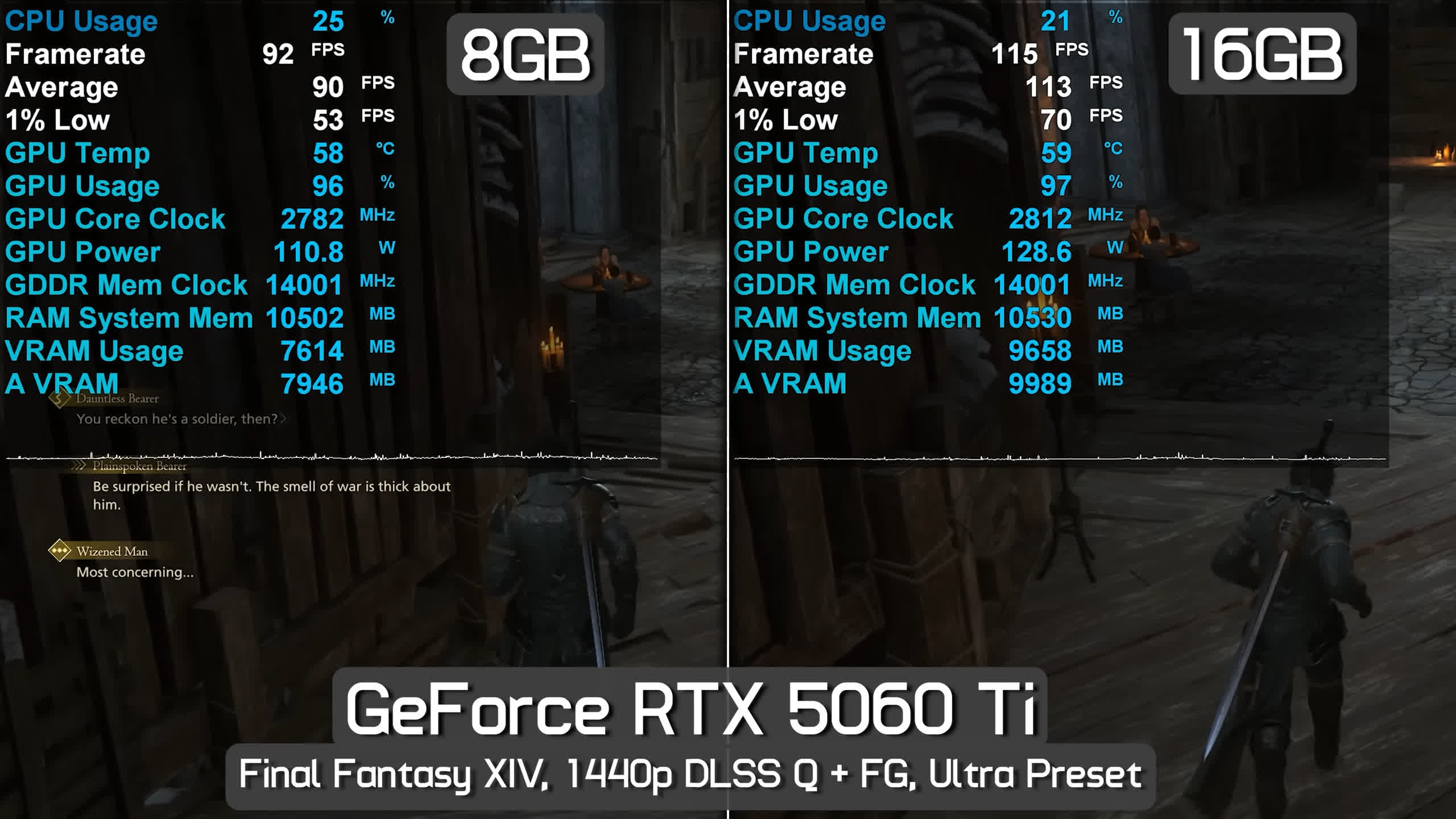
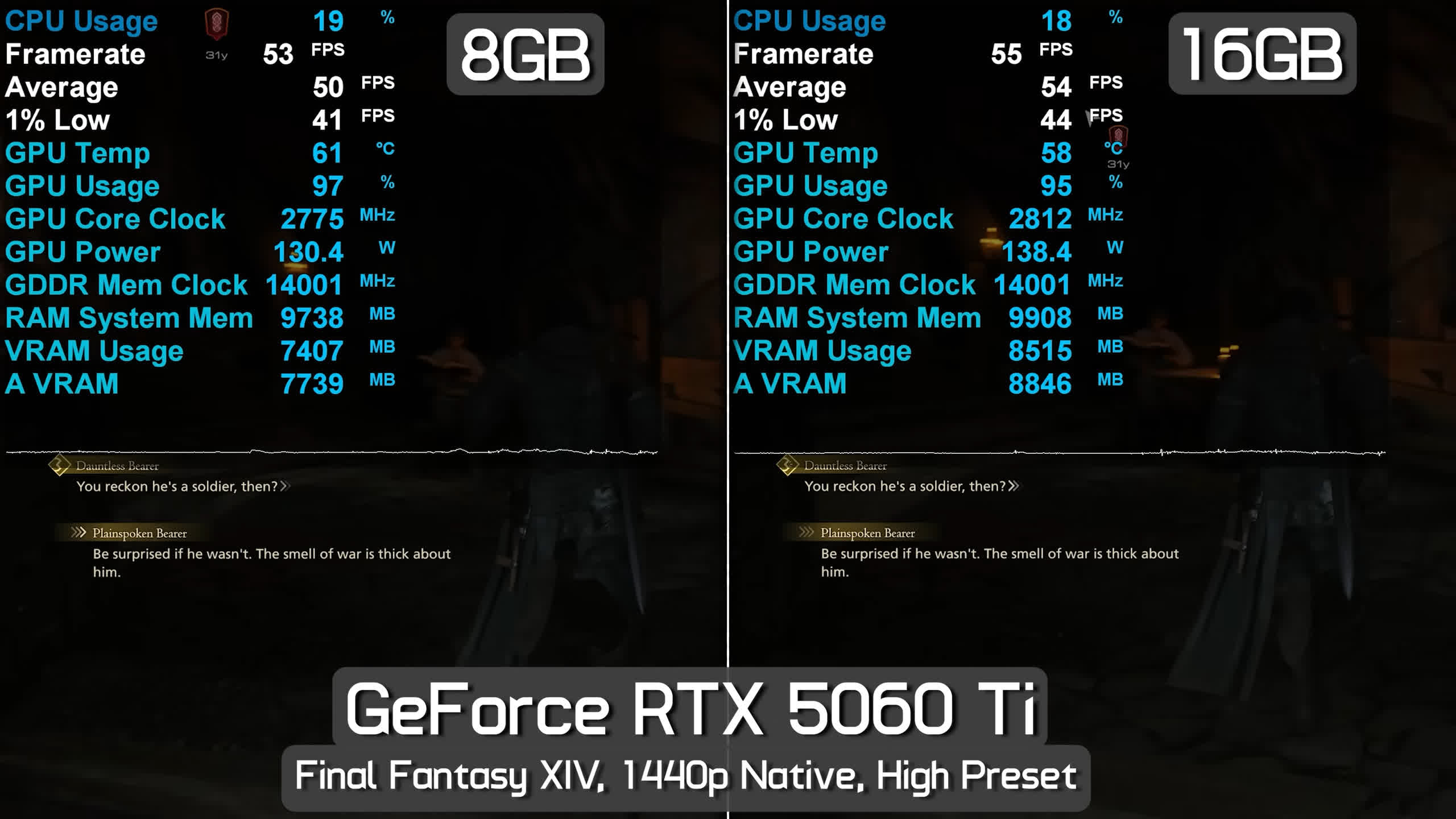

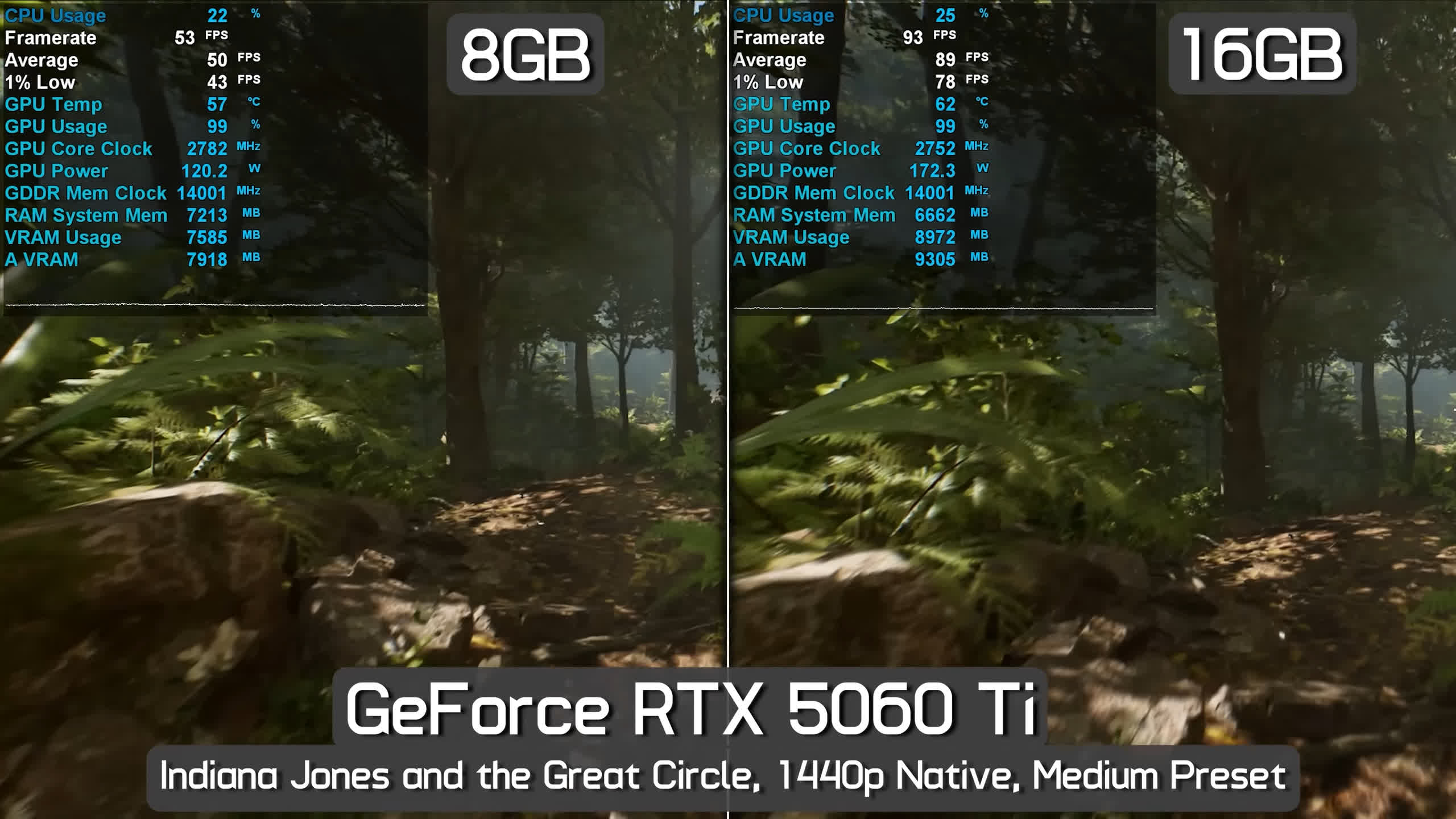
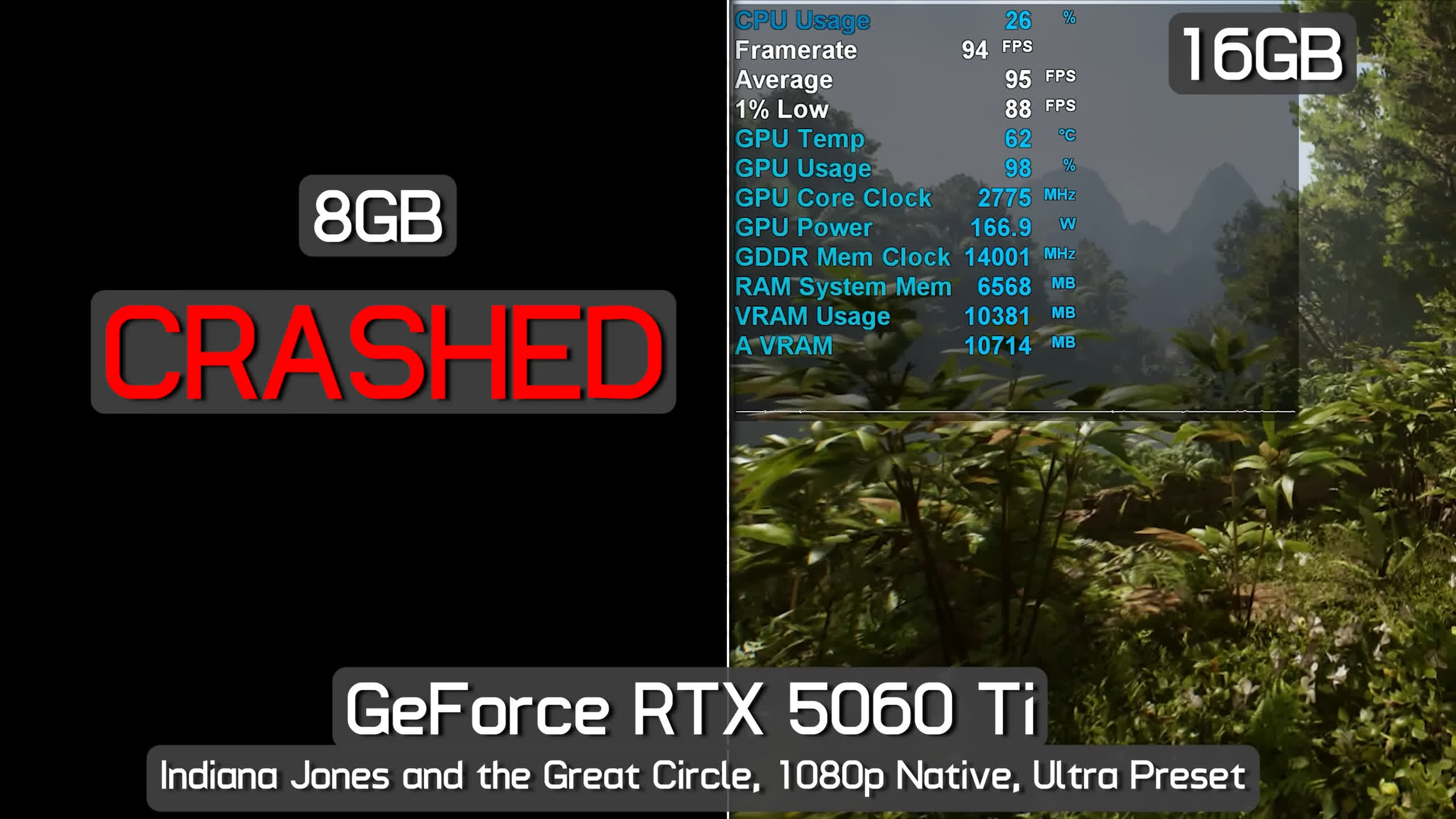
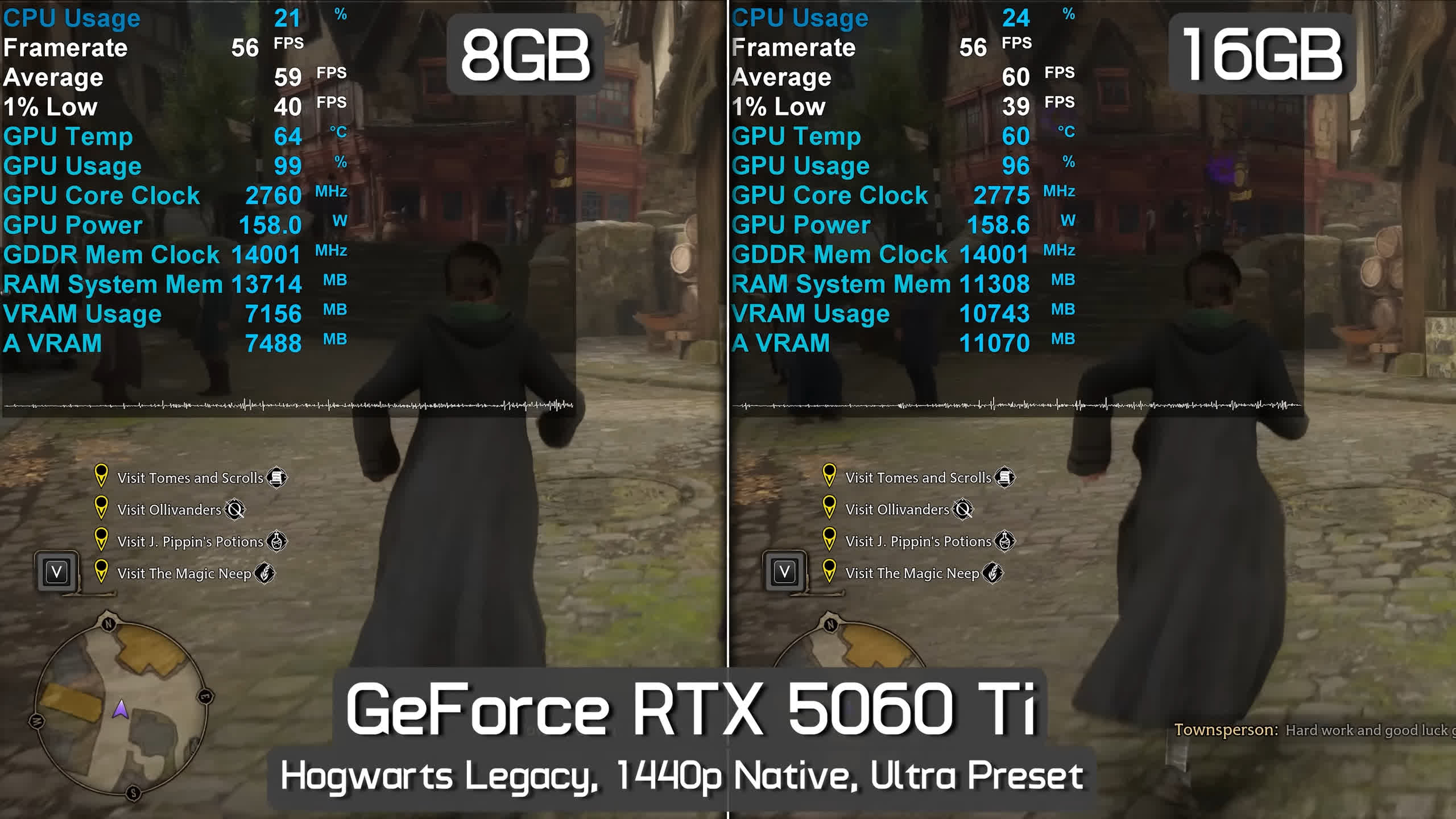
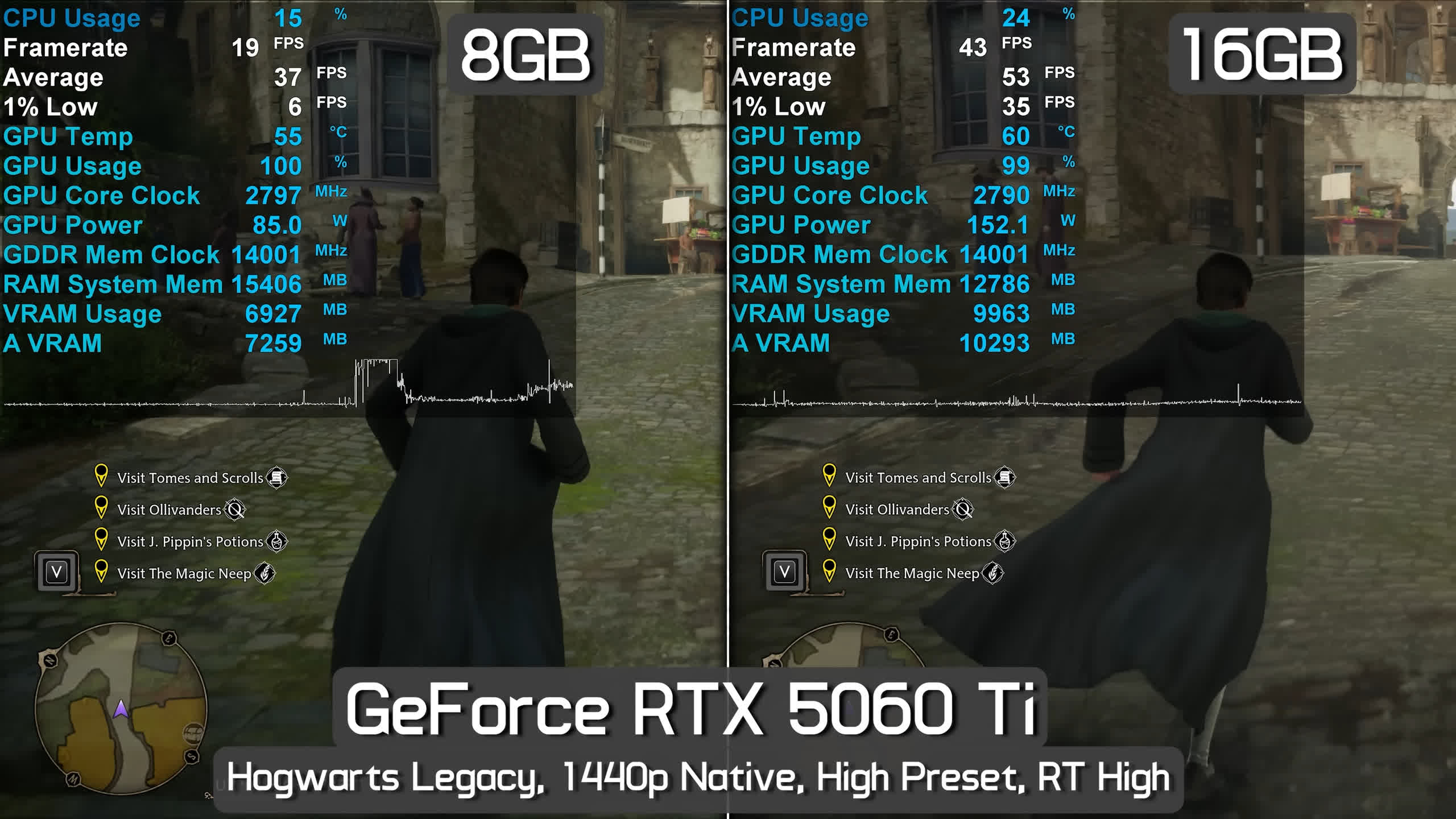

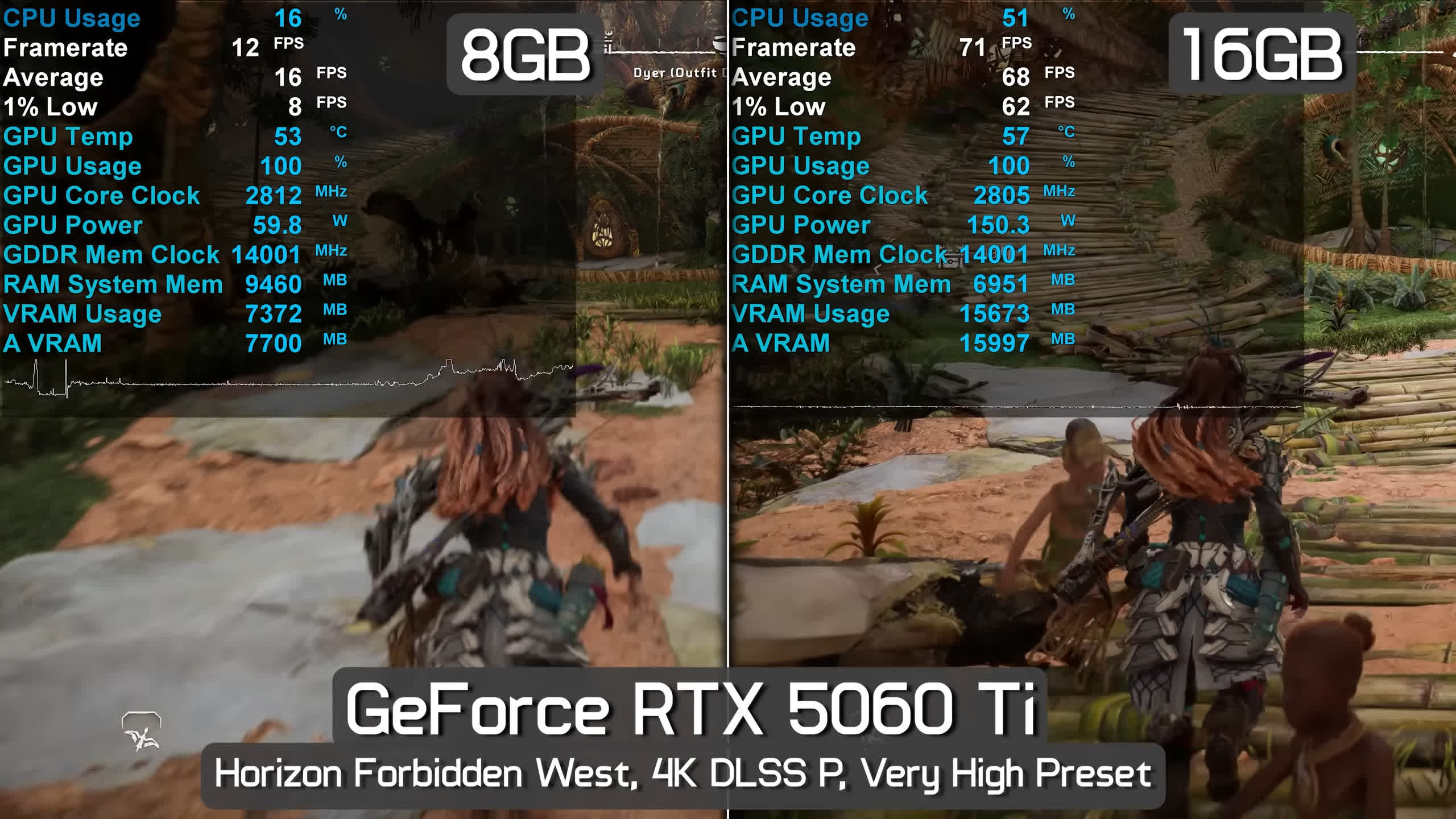
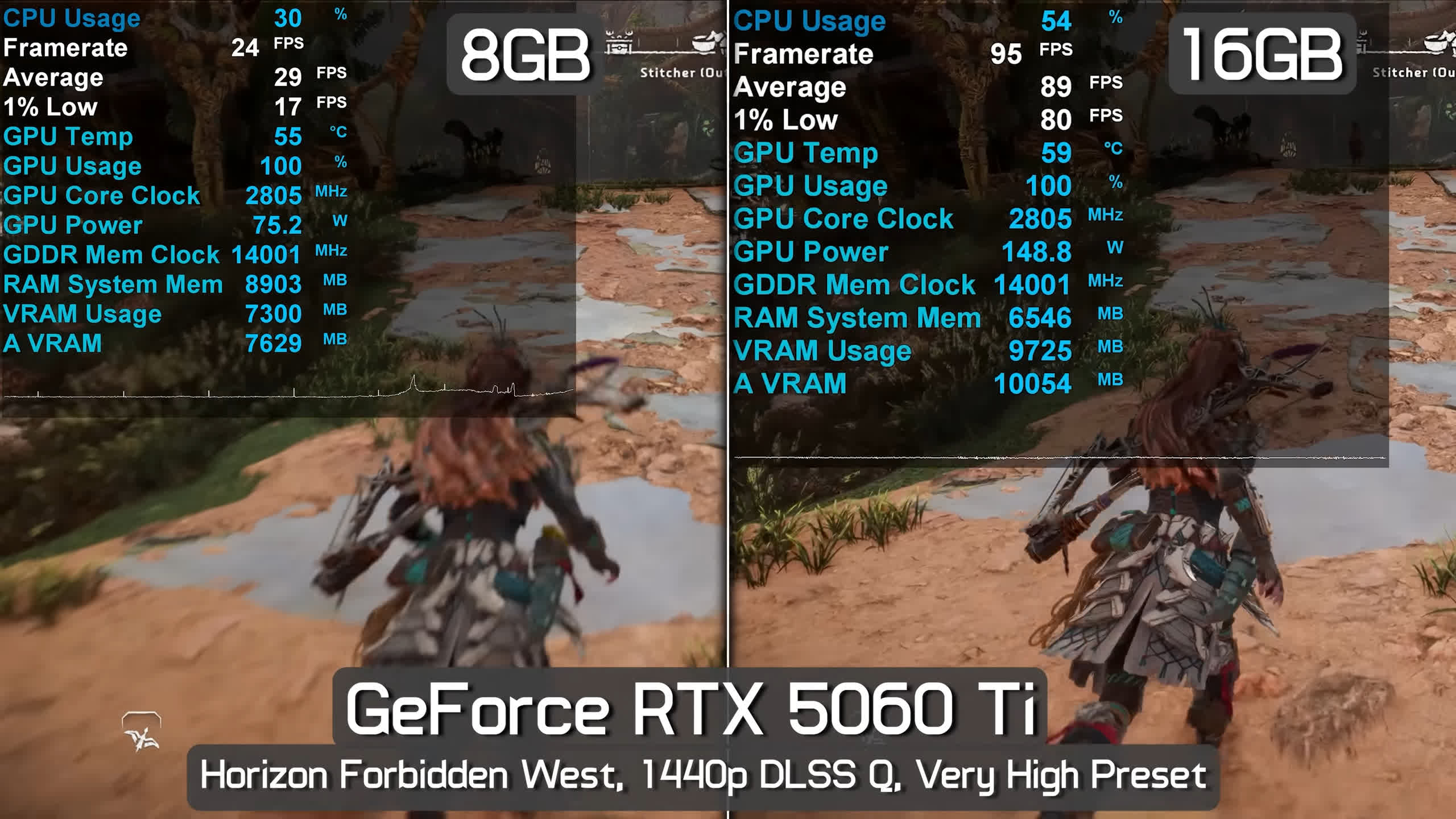

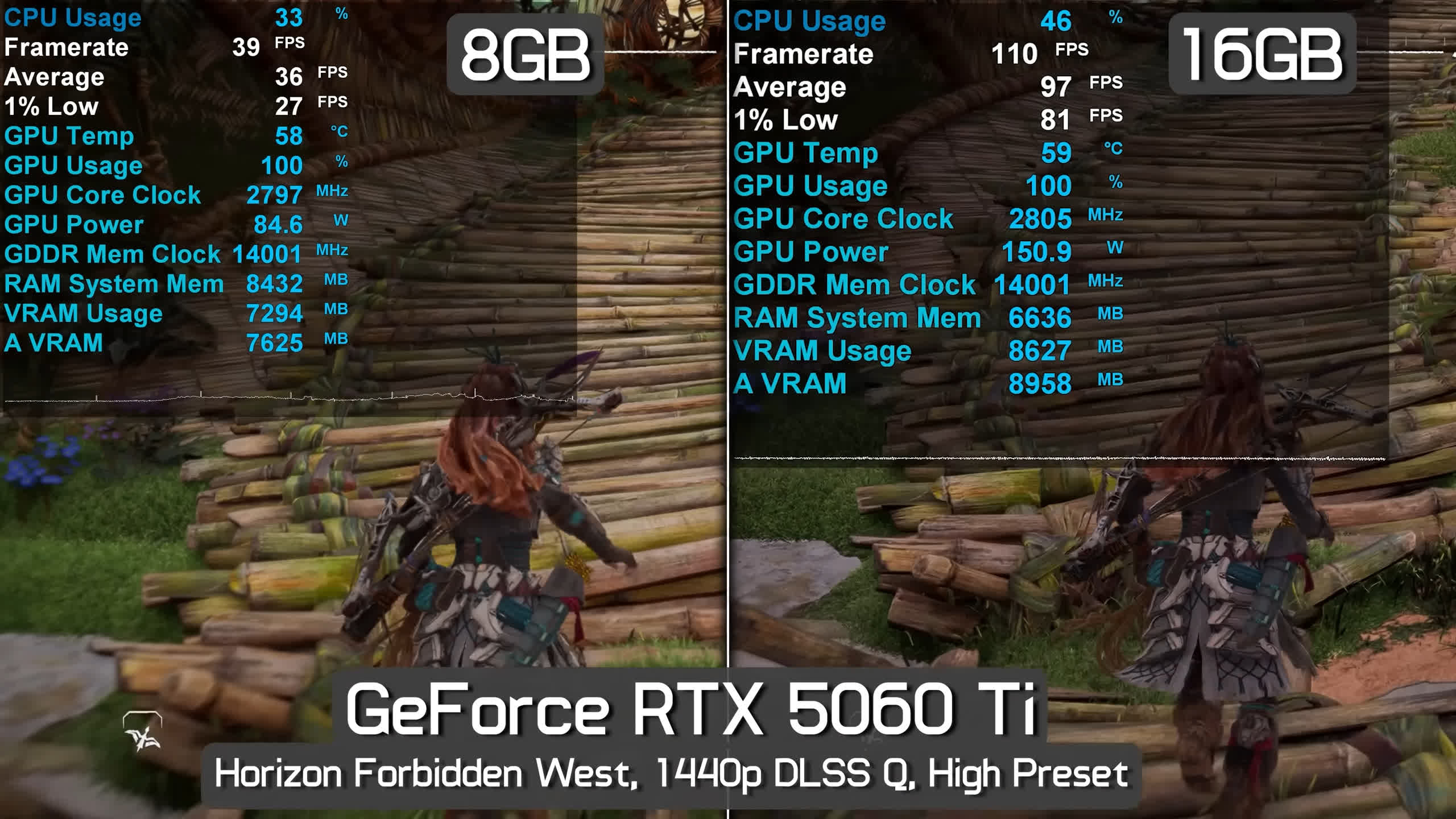
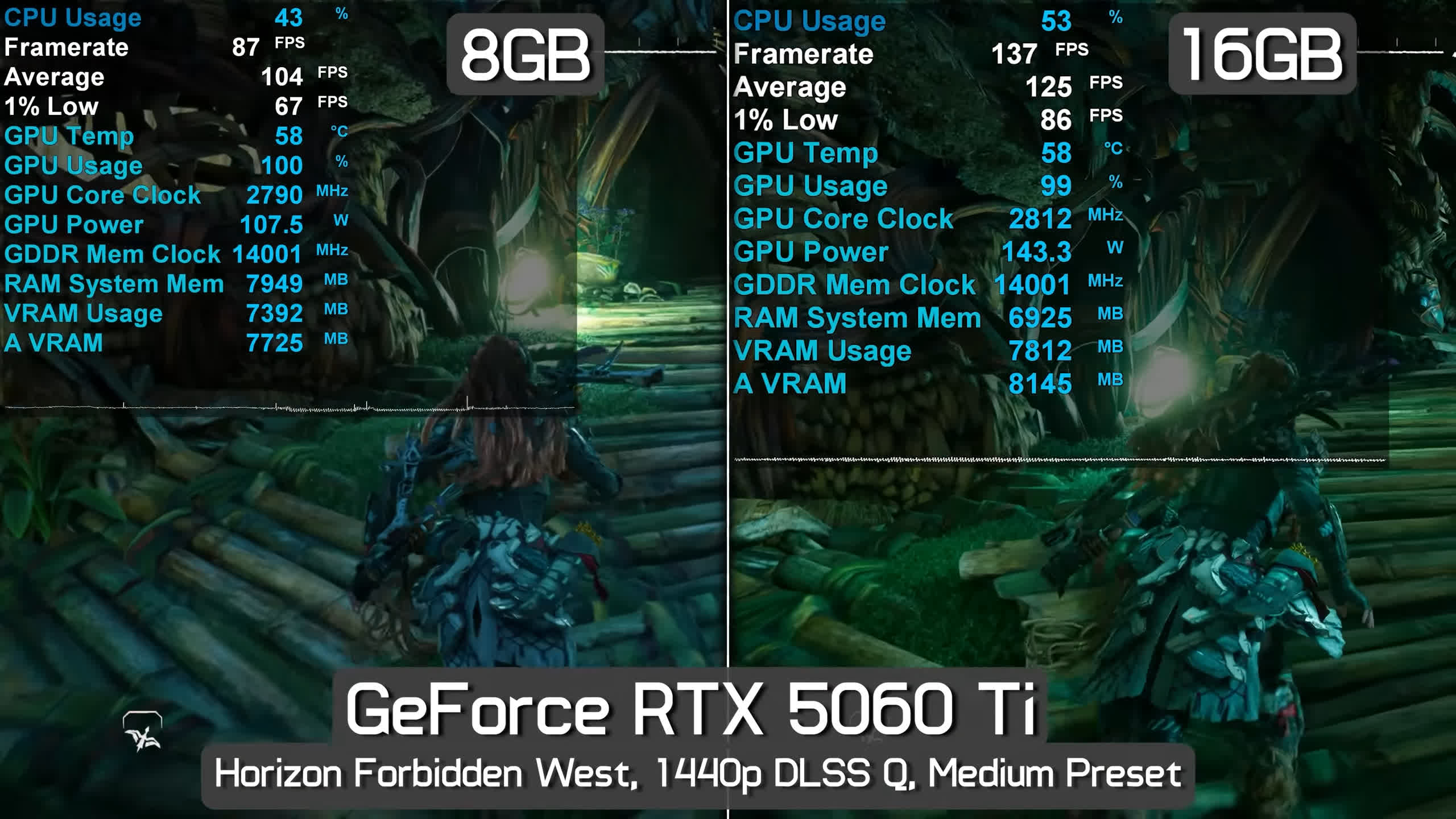
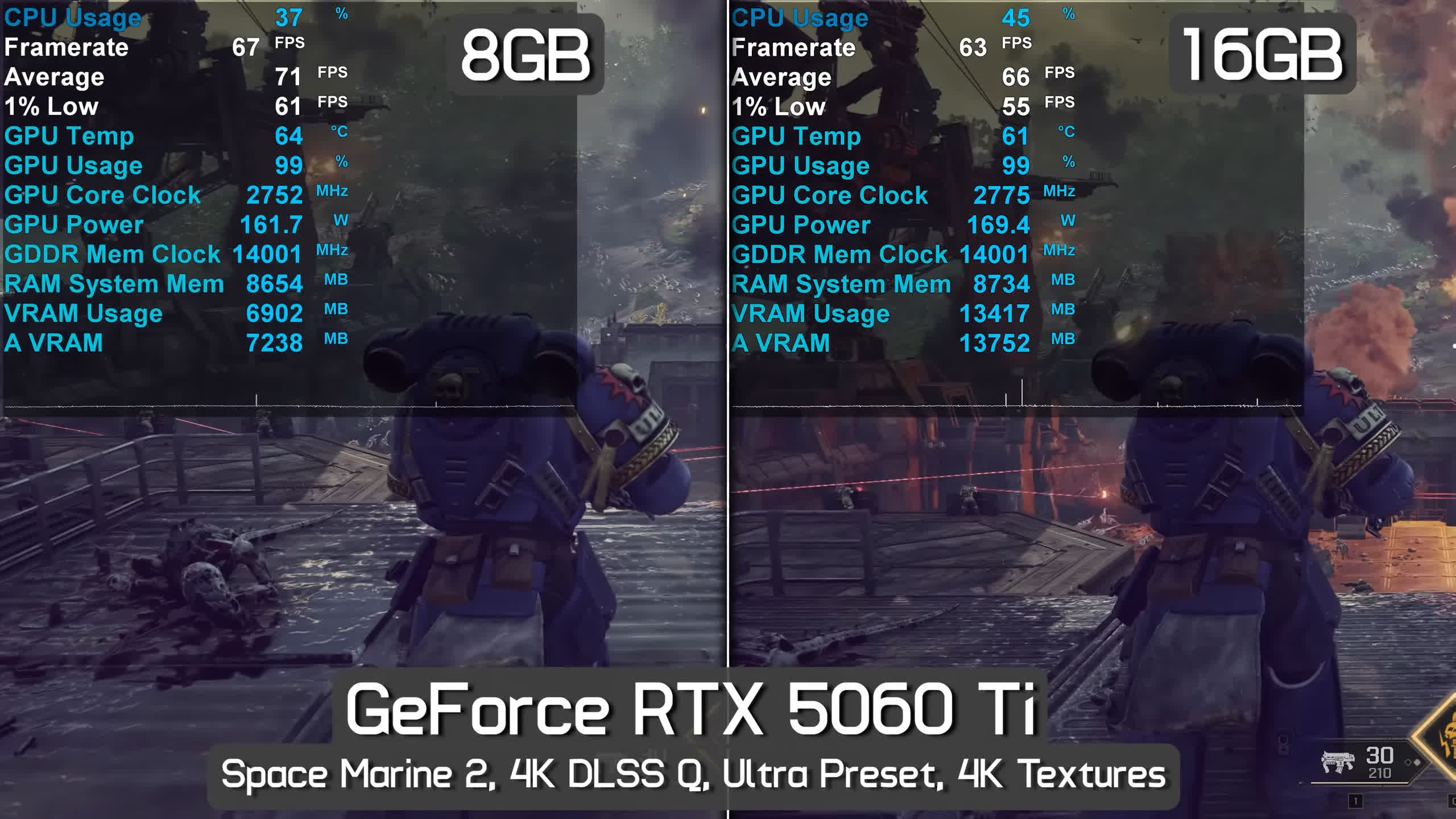

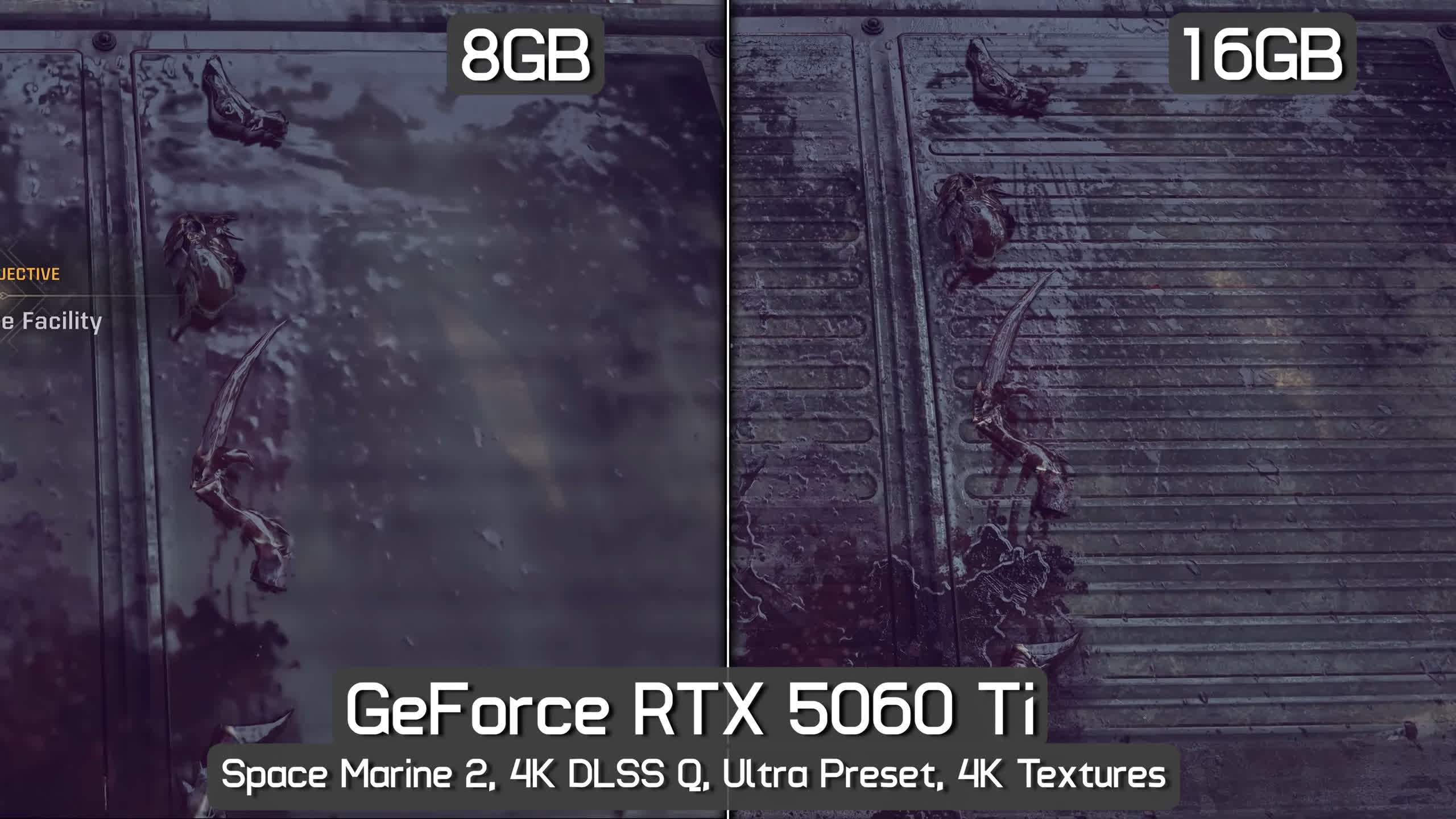

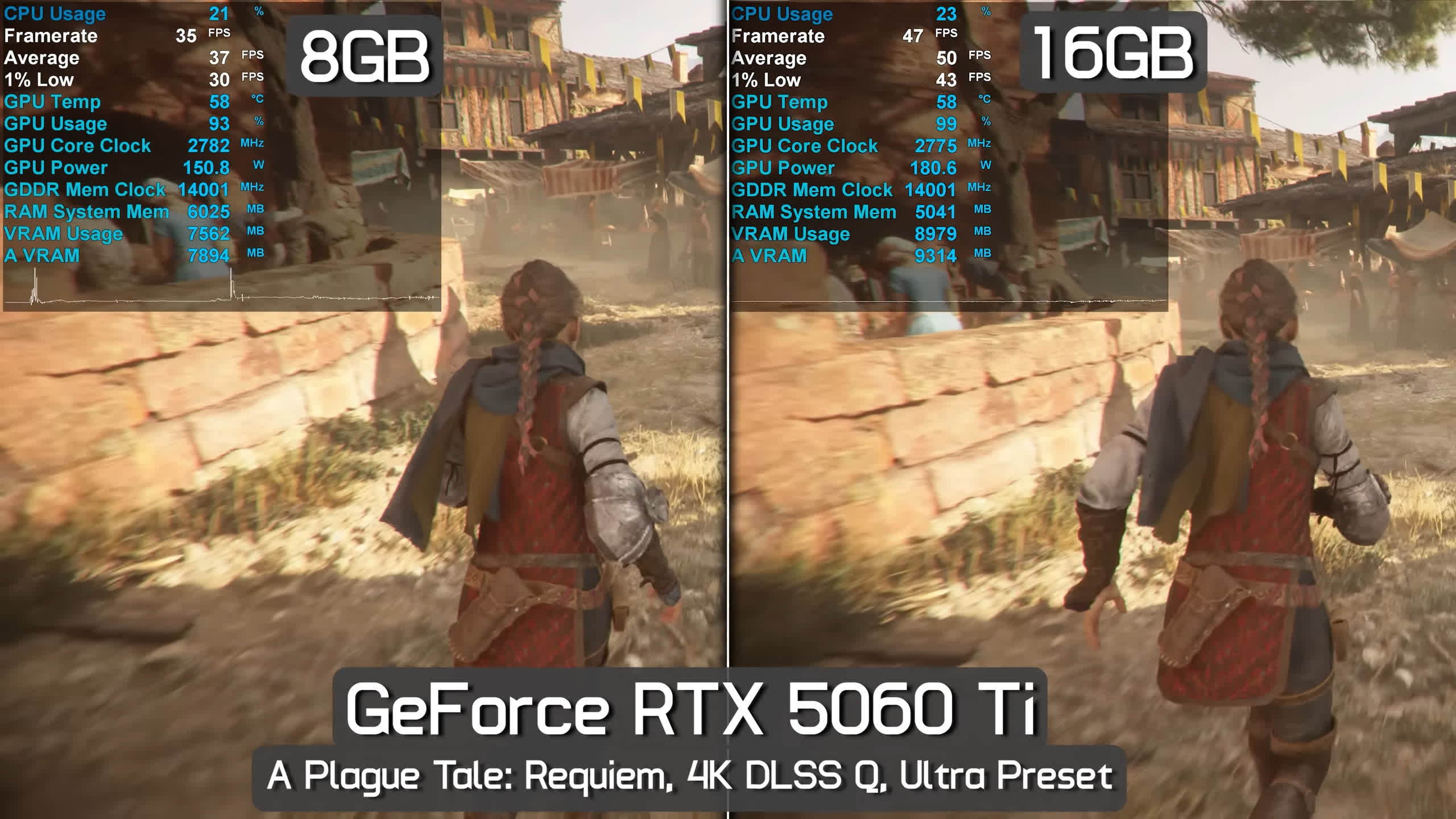
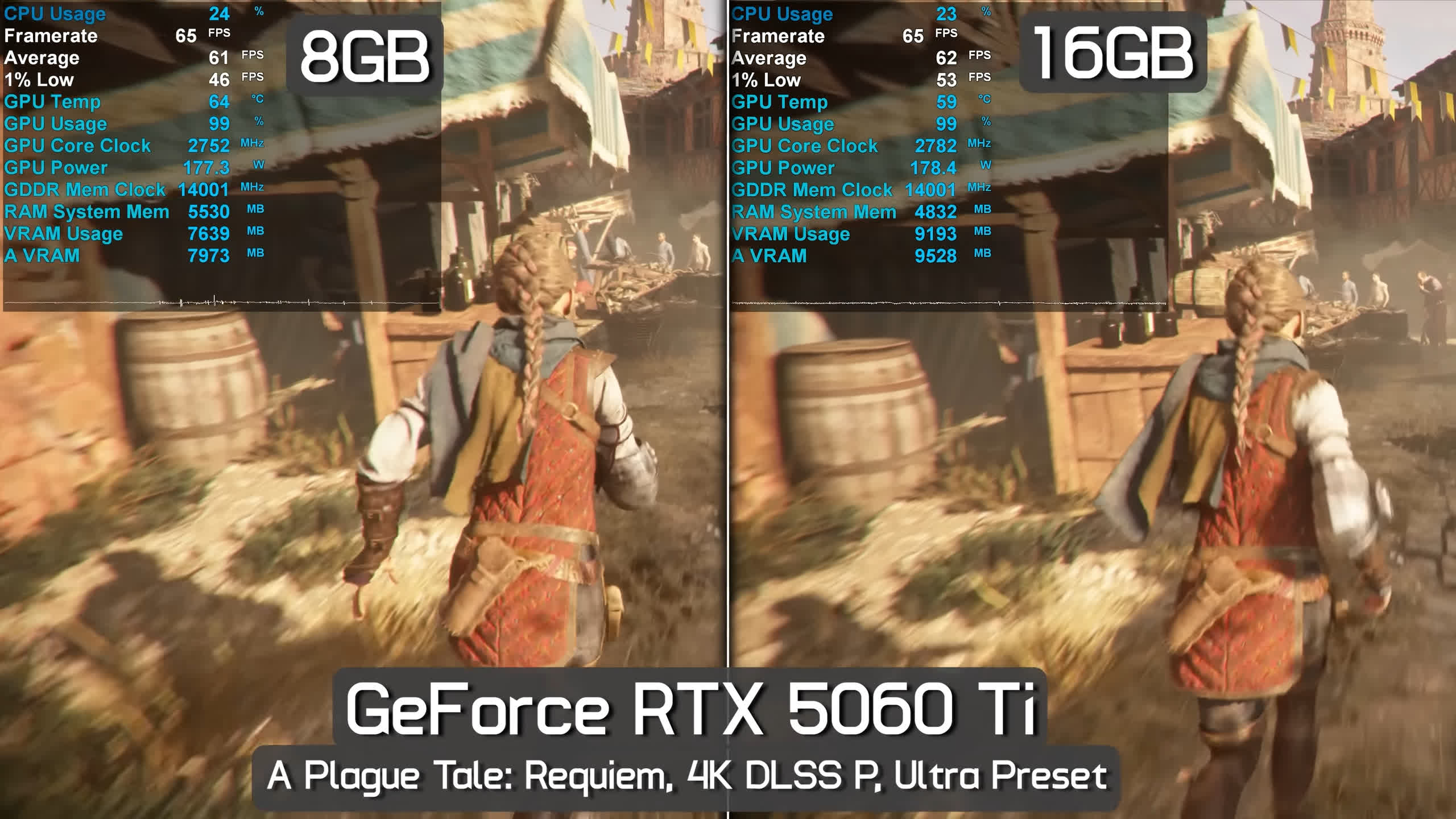

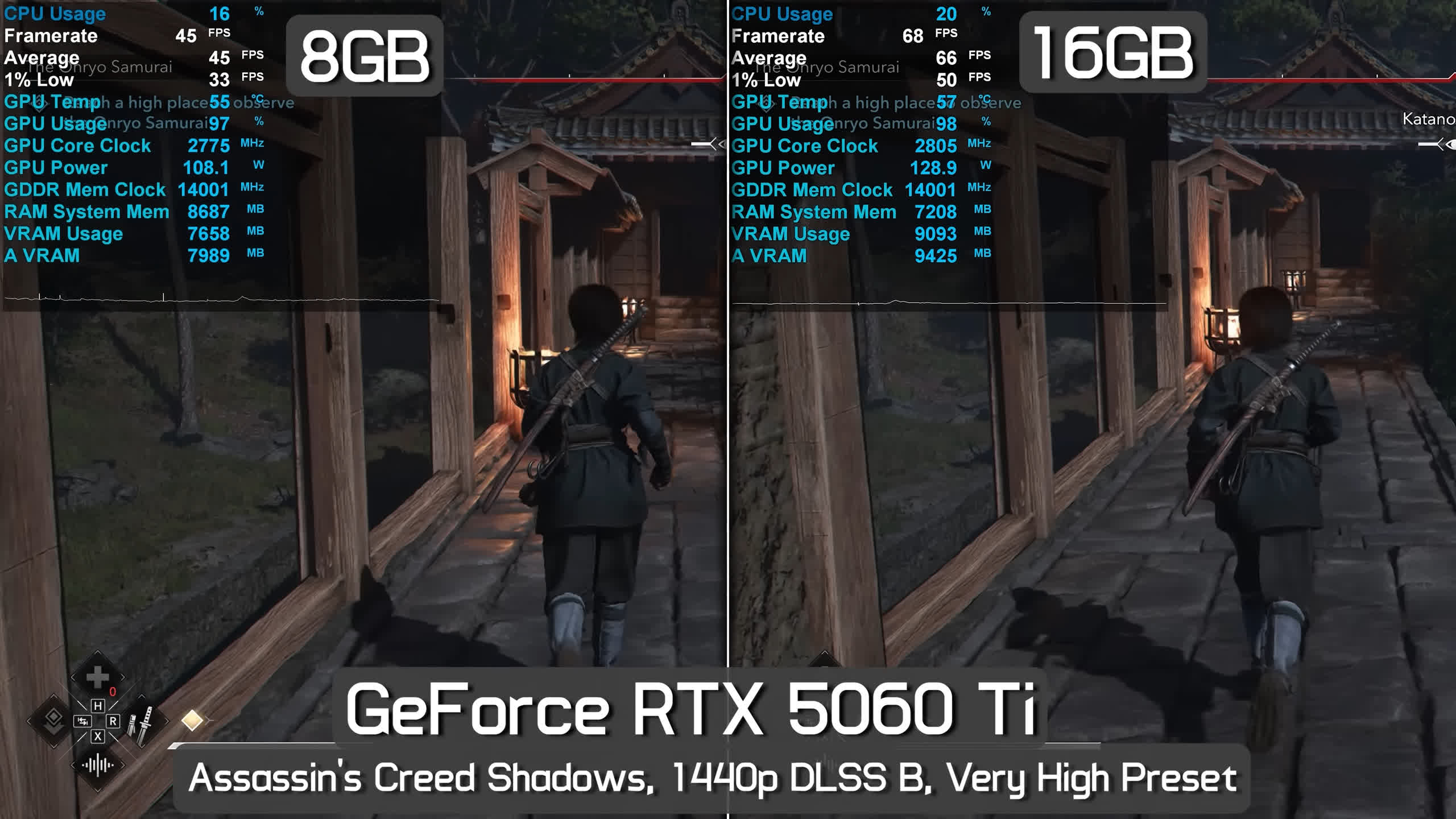


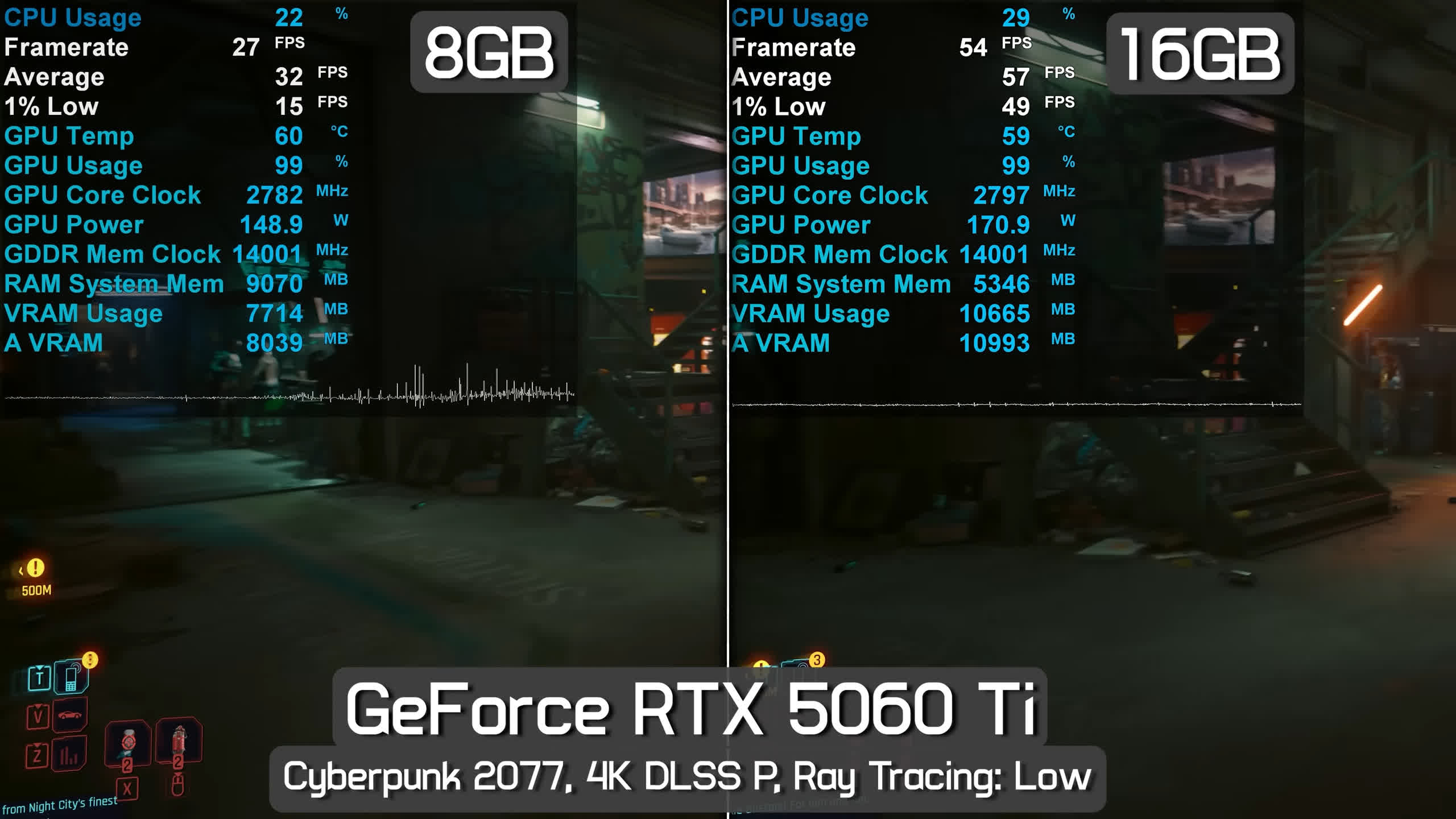
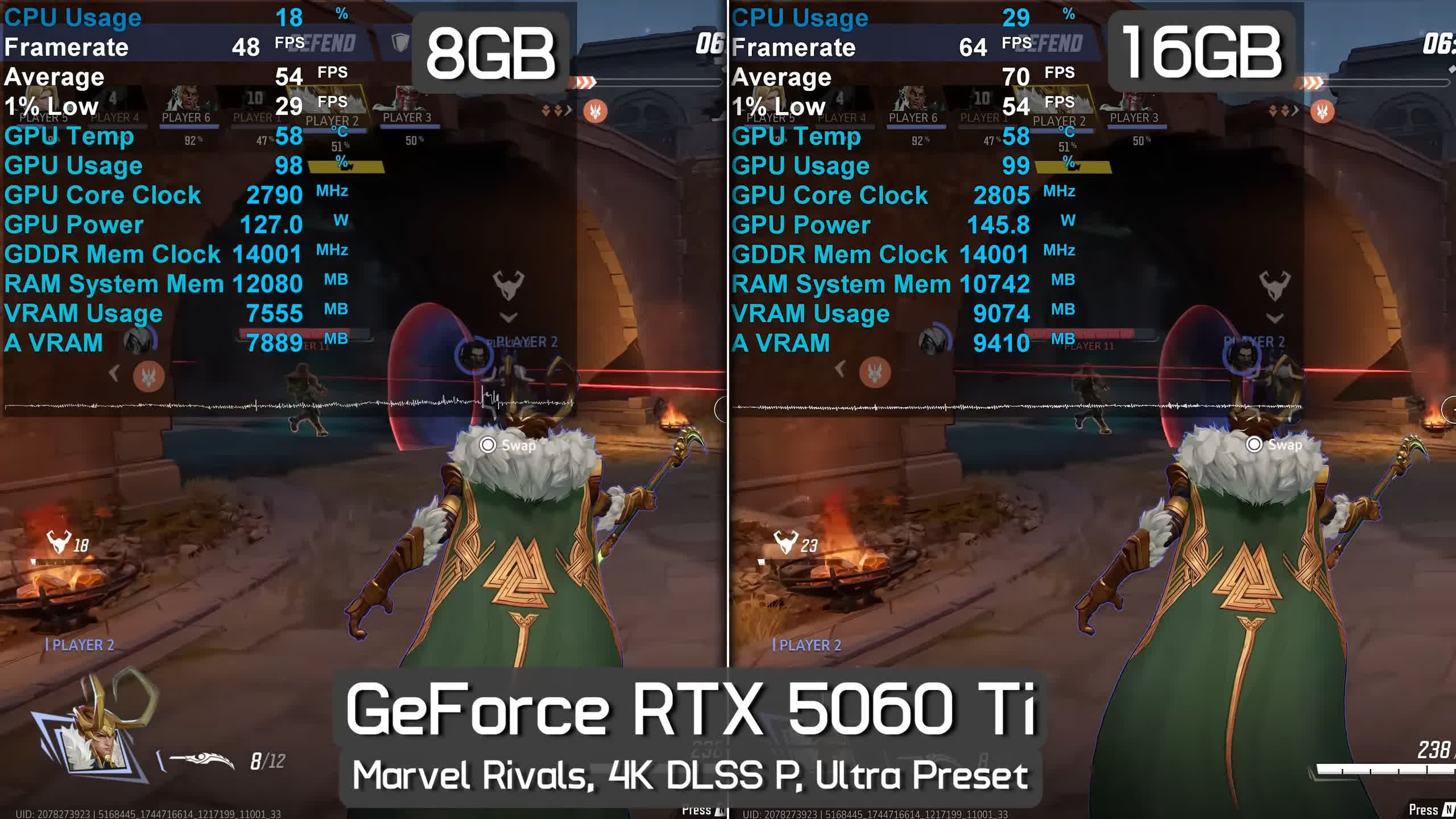

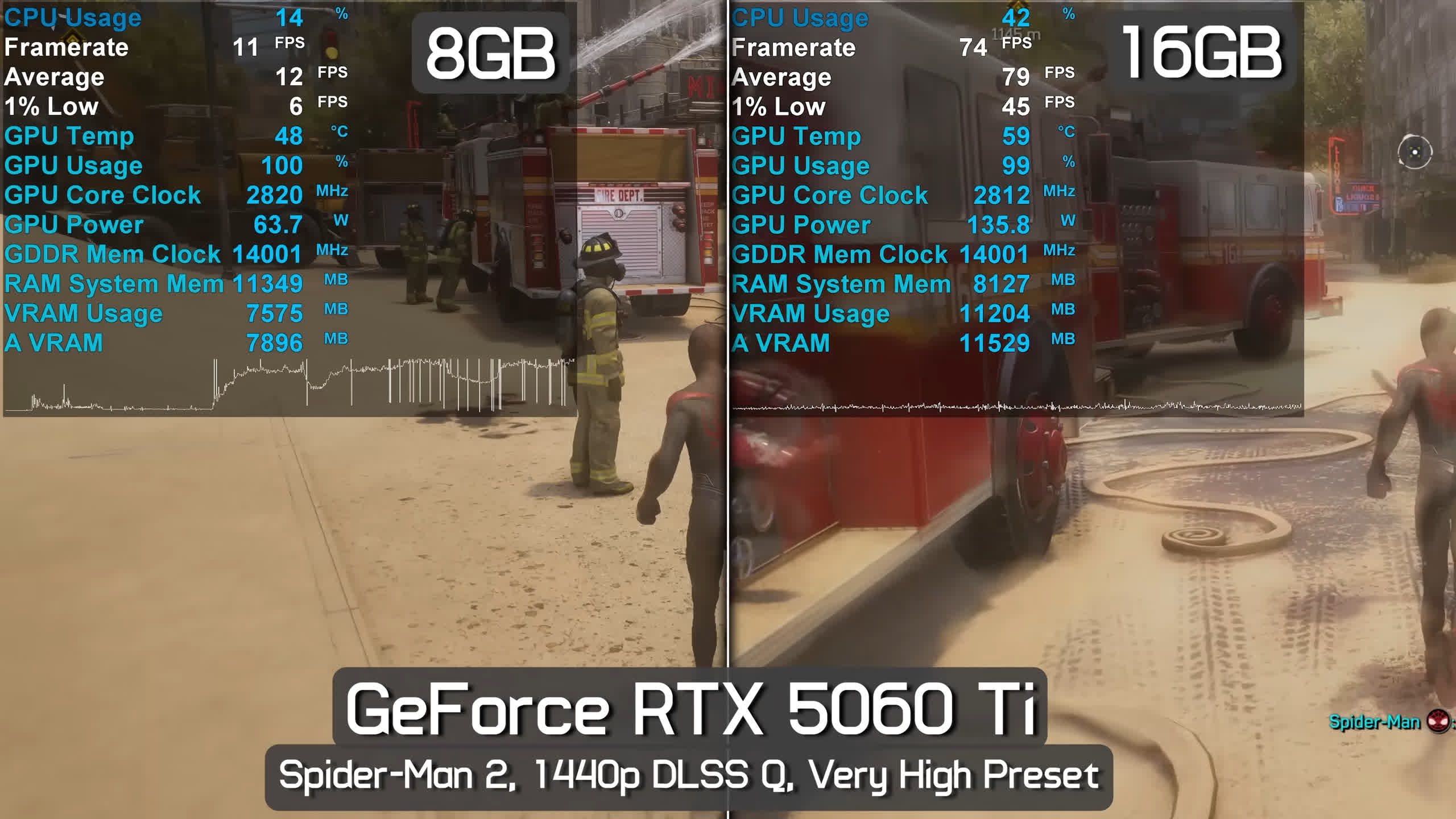
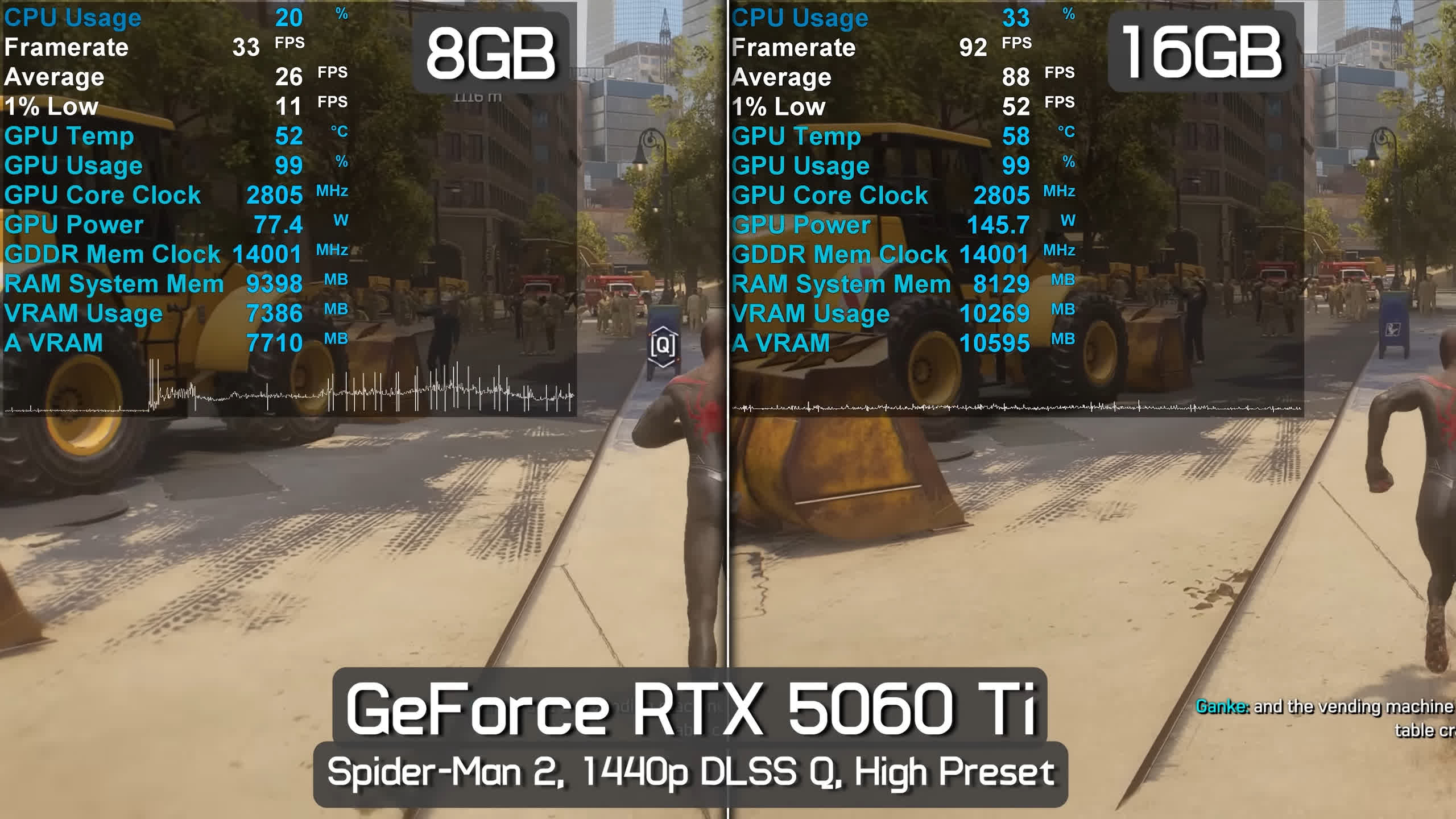
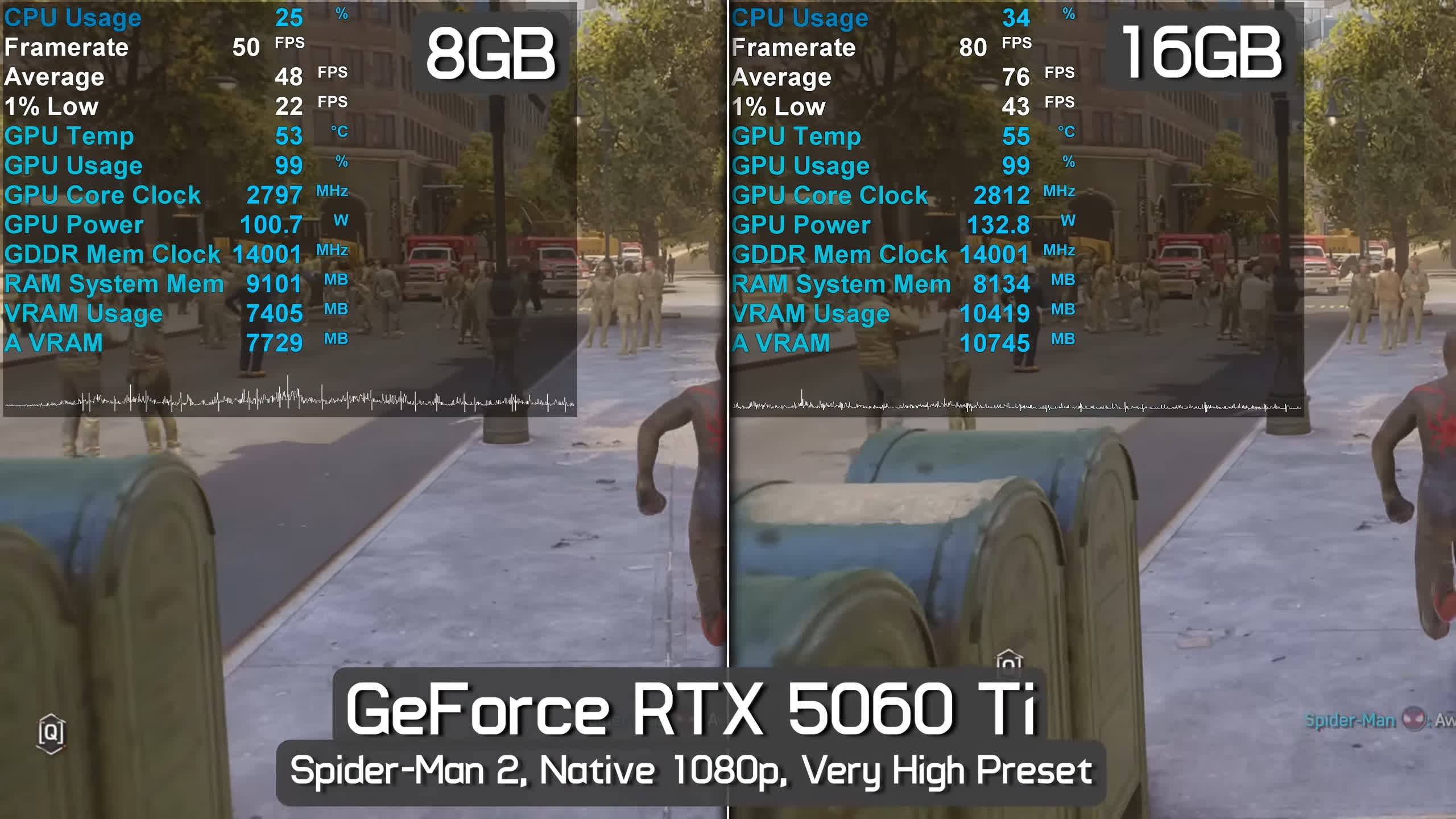
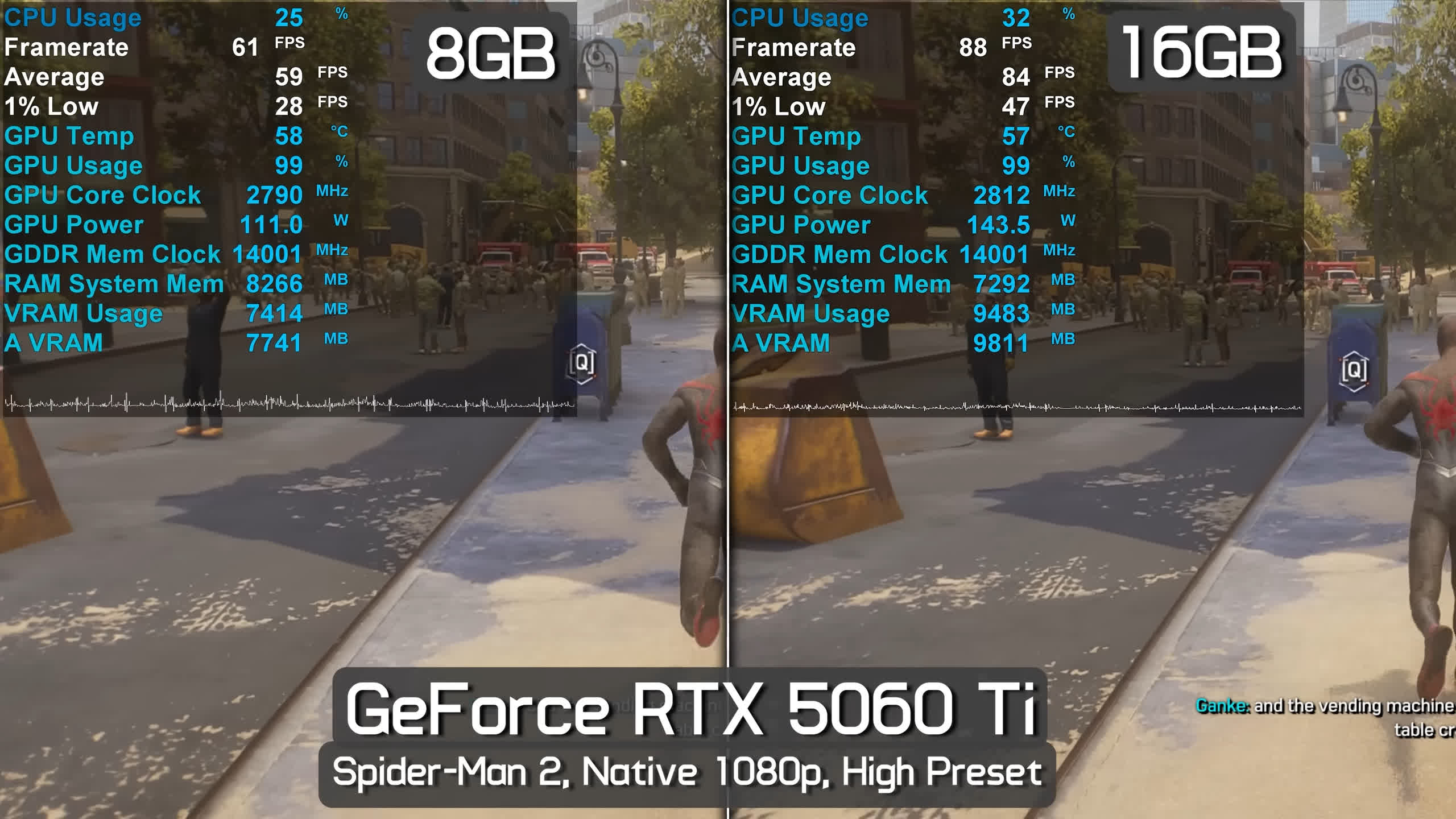
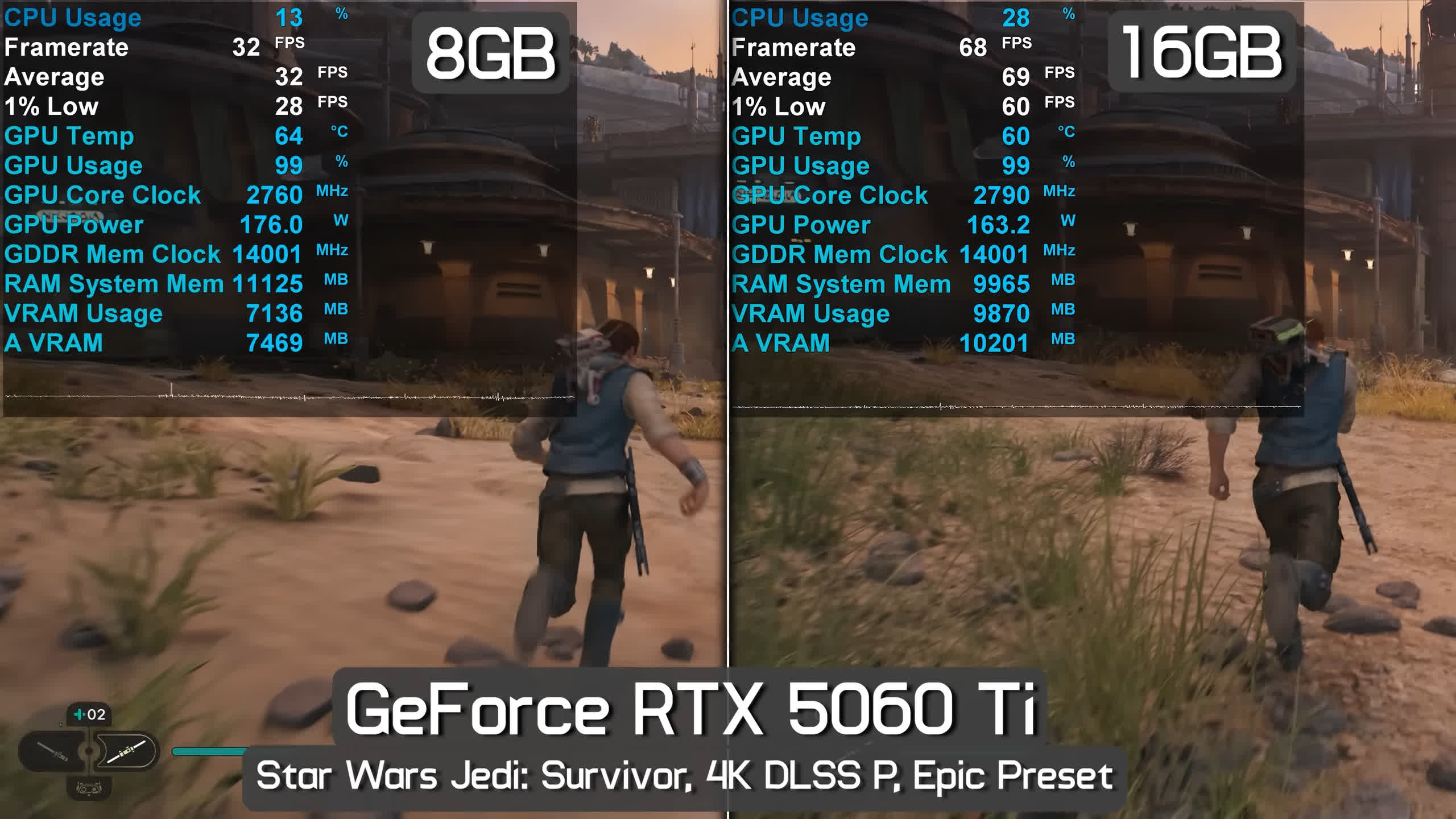


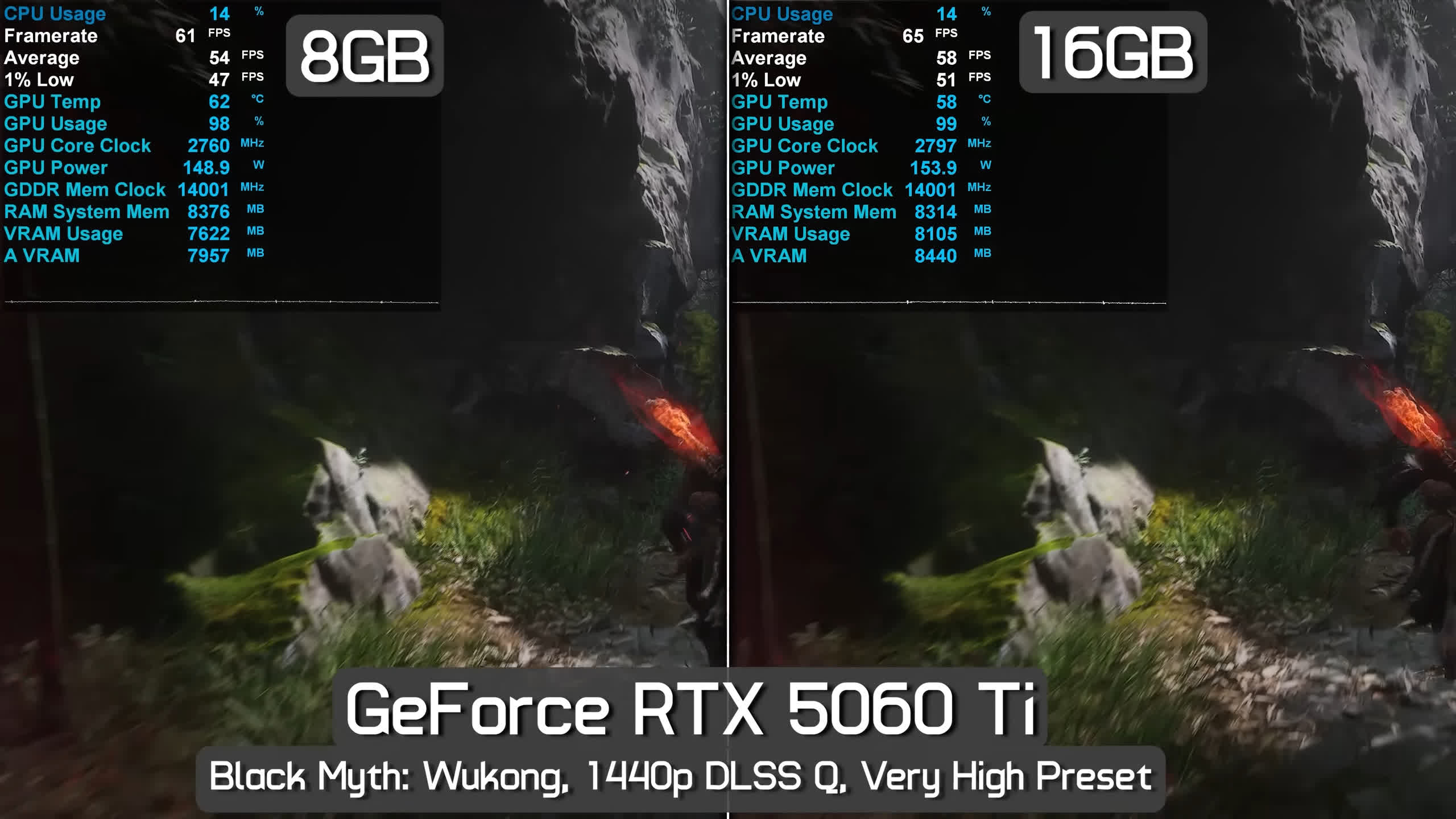


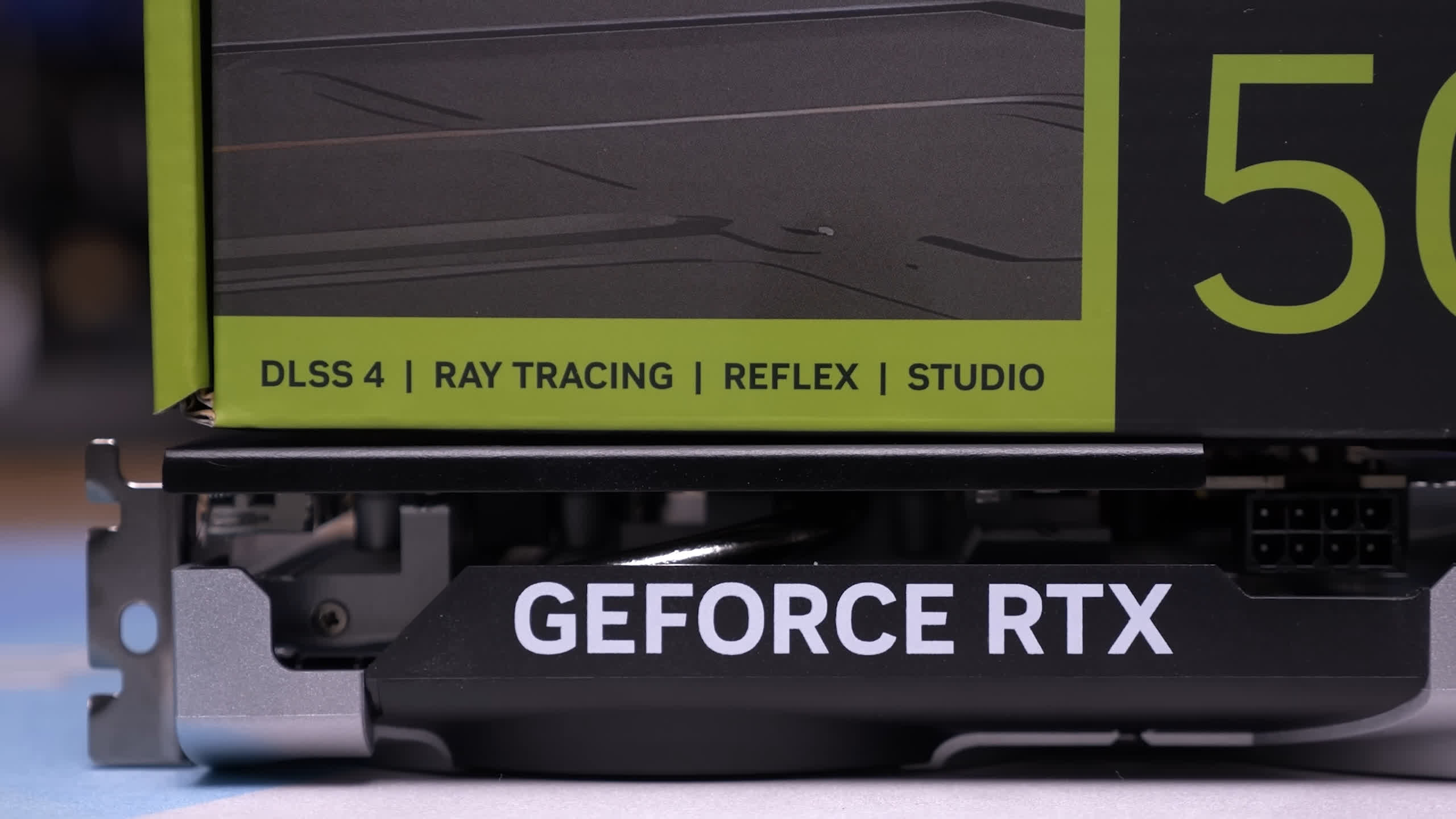


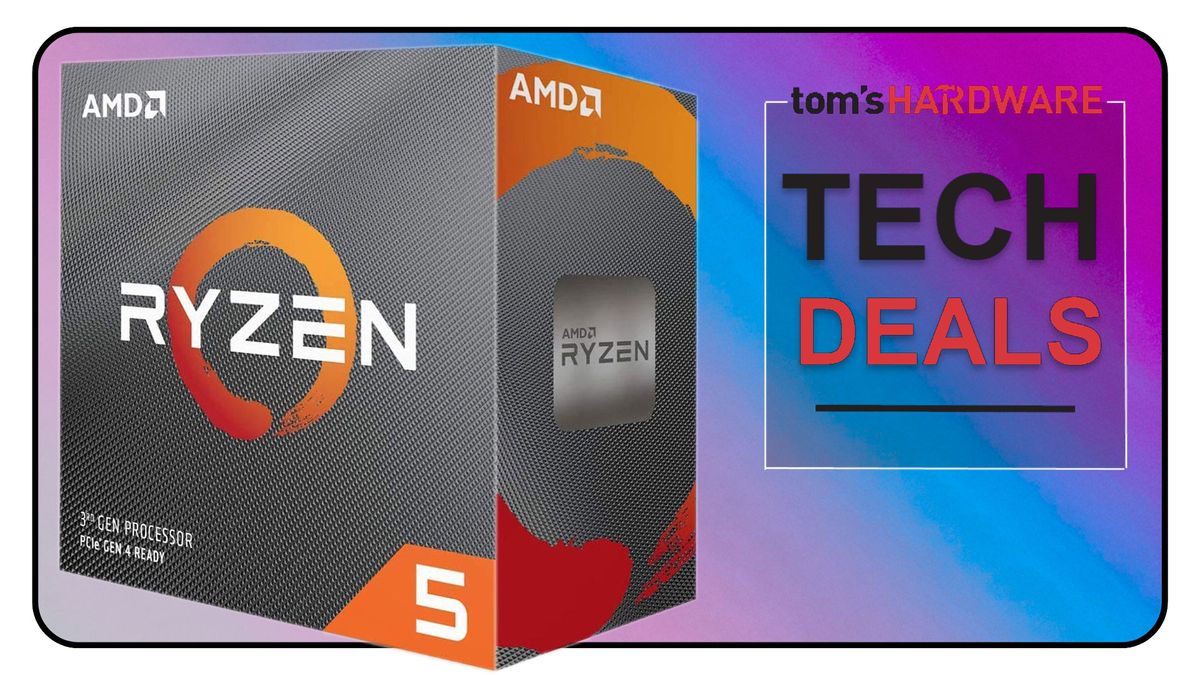
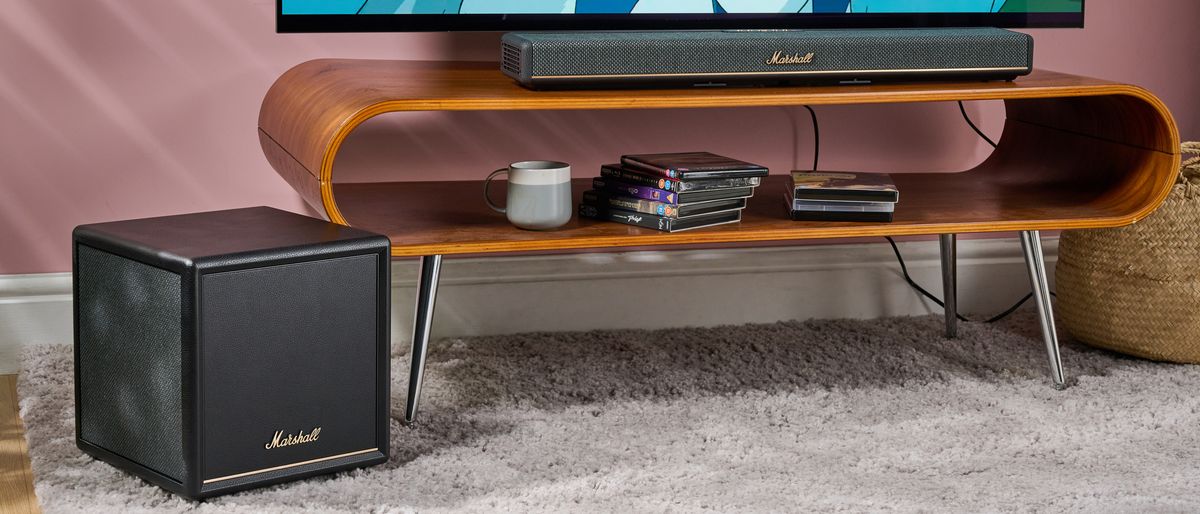





 English (US) ·
English (US) ·